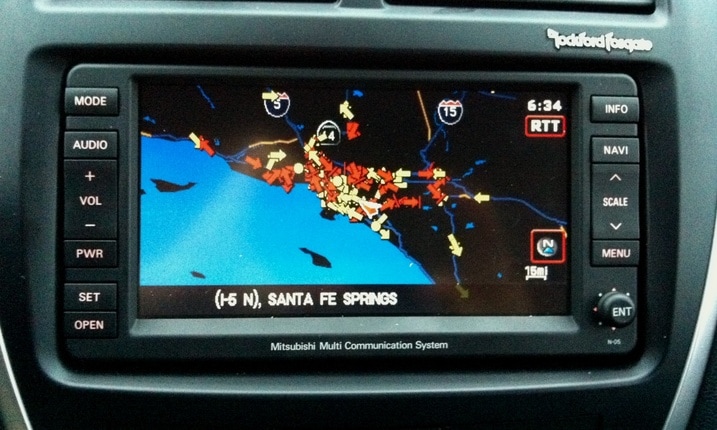2011 Mitsubishi Outlander Sport: What's It Like to Live With?
Read the latest updates in our long-term road test of the 2011 Mitsubishi Outlander Sport SE as our editors live with this car for a year.
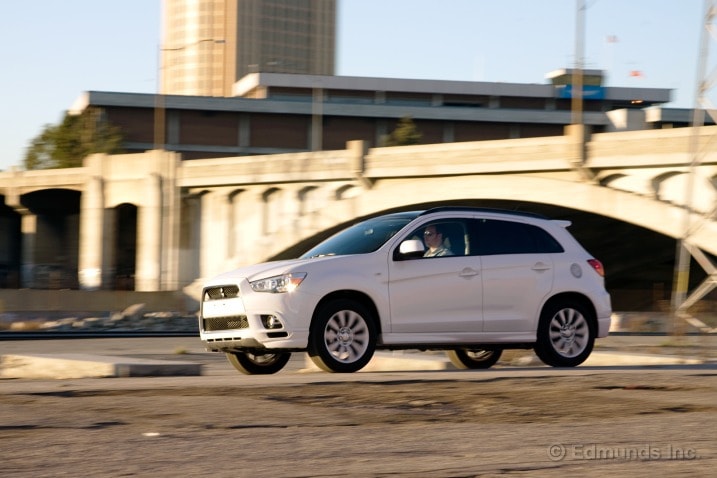
What do you want to know about?
- Introduction
- Sitting To Know You
- Flat-Face Shows in Shadow
- Road Trip +'s and -'s
- 4B11 Tuning
- Battle Wound
- Steering Wheel Lock
- Road Trip Summary
- Off to a Good Start
- Things That Are Quicker...
- Shape of the Future
- Hey, No One Mentioned This!
- On-Demand 4WD
- Excellent Seats
- This Drives Me Nuts
- Looks Good, Feels Slow
- Cleaning House
- Real-Time Traffic?
- Service Reminder
- Retaining Water
- Can Slalom Traffic
- Alloy Fuel Cap
- Busy Audio Interface
- Power Liftgate
- SatRad Fail!
- Pretty Tied Up
- The Rear Looks Like Apple Cat
- Not Really.
- Gotta Keep 'em Separated
- A Few Words About Leather
- Also Has Auto Wipers
- Shift Paddles Needed
- Hello, Mitsubishi?
- Backseat Comfort
- Five Things I Like
- iPod Connection
- Big Sun
- Highway Drive
- Just Enough
- Oh! the Envy
- You Remind Me...of Dakar!
- No Mode but Sports Mode
- I Can't Live Without...
- 2011 Mitsubishi Outlander Sport Wins 3 World Records
- Mystery Mitsu
- Smells Like Team Spirit
- Good at Mundane Sports
- Well, Would You Look At That
- The A-Pillar Dangle
- Back-Up Guidelines
- DIY A-pillar Trim Fix
- True Compact Crossover
- ...With a Paddle
- I Wonder
- Plenty of Room for More Motor
- Carpool Lane Navigation
- Fake Rear Diffuser
- White is the New Mitsubishi
- Manages Interior Glare
- Seat Fabric Of Our Lives
- Don't Stop The Music
- Maintenance Needed
- Fog Lights
- Most Fuel-Efficient Crossovers
- Paddle and Row
- The Irony
- Big Chunk of Invisibility
- The Honda Thing
- Is This Gonna Cost $1,250?
- Bolivia's Road of Death
- Remembers
- Twins
- Service Visit
- The Distant Future
- Back from Berlin
- Cabin After Dark
- Daily Grind Delights
- Trying to Like it
- 1000-Mile Road Trip
- Dog Report
- Well-Designed Sunshade
- Not Ideal for Lemons
- Hidden Seat Heater Switch?
- Now That's Just Goofy
- Service Already?
- That's Not A Bad Angle
- Hauls Tires
- Center Arm Rest Goes The Distance
- Peculiar Roof Rails
- Great for Around Town
- Audio Packaging
- Radio Design Flaw
- Seat Belt Chime
- Road Noise
- Hauls the Ladder
- Works for Single Me
- Using the Pass Through
- Road Trip To Monterey
- 15,000 and Counting
- Good Road Trip Ride
- Visiting a 9/11 Memorial
- Dog Report 2
- Roadside Distractions
- Bluetooth More Distracting Than Nav?
- Race Weekend
- Service Visit - The Game Continues
- Visiting Heaven
- Roadtrip Fuel Economy
- How's Business?
- Mysteries of the CVT
- Nav Traffic?
- Better, Stronger, Faster.
- Road Trip
- Random Trip Notes
- Wrap-Up
Introduction
The rules of being fashionably late to a party are undefined but absolute. There's no question at this point that Mitsubishi is late to the compact crossover party. It's had the three-row Outlander for the correct amount of time, but the Outlander has never been a mainstream contender in the market segment. And so with the introduction of the 2011 Mitsubishi Outlander Sport, Mitsubishi has to crash this party right.
There are two parts to being late and still making the right kind of entrance. First, you've got to look the part. And with an Evo-style trapezoidal grille, sport bodywork and an aircraft-style fuel door, there's something definitely cool here. Second, you've got to be interesting enough to carry the momentum from the front door through the rest of the night. And that's where we come in. The smaller, cheaper and slightly cooler 2011 Mitsubishi Outlander Sport is late to the party and we've got 12 months and 20,000 miles with the new compact crossover to see if it can hang with the established partygoers.
What We Got
Like every Mitsubishi Outlander Sport, our new 2011 Mitsubishi Outlander Sport SE AWC is equipped with a 2.0-liter inline-4 that makes 148 horsepower and 145 pound-feet of torque. In the ES, the lowest trim level which retails for $18,495, the power gets routed to the ground via either a continuously variable transmission (CVT) or an enthusiast-friendly five-speed manual and only through the front wheels in both cases. In our fancy AWD (AWC, but we'll get there) SE model, the only available transmission is a CVT with magnesium shift paddles. This reduces the fuel economy to 29 mpg highway from the 31 mpg highway offered by the five-speed.
At the ES end of the spectrum, the Outlander Sport comes acceptably equipped with seven airbags, Mitsubishi's Fuse hands-free communication system with Bluetooth streaming audio and USB input and the same mechanics we see throughout the line. Up the ante to the SE 2WD and you shell out $21,695 but end up with FAST-key passive entry and one-touch start/stop, 18-inch wheels and auto on/off HID headlights. The final step in the Outlander Sport family is the SE AWC (there it is again), which adds heated front seats, an available (and giant) transparent panorama roof and Mitsubishi's All Wheel Control all-wheel-drive system.
The AWC system is Mitsubishi's driver-adjustable electronically controlled four-wheel-drive system. Spin the console-mounted knob to 2WD mode and the Outlander Sport is set for best fuel economy and easiest driving. Twist the knob to 4WD and you get all-wheel drive with limited power sent to the rear wheels. Flick it one notch over and you're in LOCK and there you get as much as 60 percent of power sent to the rear wheels. (This setting is for fun.)
But that's all standard stuff. When our 2011 Mitsubishi Outlander Sport showed up it had some $6,000 in extras. The Premium package was $1,800 and came with the panoramic glass roof, black roof rails, a 710-watt Rockford Fosgate stereo and Sirius Satellite Radio. The navigation system and rearview camera package is $2,000 and comes with navigation, a rearview camera and an aux video input. Finally there are the Cargo package and the wheel locks for $185 and $55, respectively.
All said and done, this 2011 Mitsubishi Outlander Sport SE AWC stickers for $28,810. We didn't pay that, however, since Mitsubishi provided the vehicle for the purpose of this test.
Why We Got It
The Mitsubishi Outlander has always been a staff favorite. Sure, the third row is a bit of a disaster, but it's there if you need it. But the real secret of the Outlander is (especially with the AWC turned to LOCK and taking full advantage of the magnesium paddle shifters) that you can really drive it. In fact, the Outlander makes us think that Mitsubishi might even know what it's doing with sporty, all-wheel-drive vehicles. (Shock.)
But the Outlander Sport is a different beast. It doesn't have the V6 power of the Outlander GT V6 in the long-term test fleet. But can a smaller, lighter package make up for that?
20,000 Miles To Go
In our full test of a front-wheel-drive 2011 Mitsubishi Outlander Sport ES, we wrote, "It's cheap, though. And big enough for gear, small enough to park, easy on gas and comes with an iPod adapter standard. What more do kids want from a car these days, anyway?"
And the short answer is "Everything." We've already noted that Mitsubishi's late to the party, so it's tried to make up for lost time by equipping the Outlander Sport with virtually everything a driver could want in a small crossover, including an electronically activated all-wheel-drive system. But can this new Mitsubishi hang in the quality and reliability departments? Is the small 2.0-liter four-cylinder hooked to a CVT going to be enough power for reasonable driving? When the Mitsubishi product planners shrunk the Outlander, did they shrink its fun, too?
Stick around for our Long-Term Road Test blog, where we'll put 20,000 miles on our new 2011 Mitsubishi Outlander Sport over the course of 12 months. We'll see if showing up late was better than not showing up at all.
Current Odometer: 1,679
Best Fuel Economy: 26.8 mpg
Worst Fuel Economy: 18.6 mpg
Average Fuel Economy (over the life of the vehicle): 22.1 mpg
The manufacturer provided Edmunds this vehicle for the purposes of evaluation.
Follow the long-term road test blog for updates about our 2011 Mitsubishi Outlander Sport.

I thought I was gonna get to drive our new 2011 Mitsubishi Outlander Sport this morning. Instead I sat in this red zone. For an hour and ten minutes.
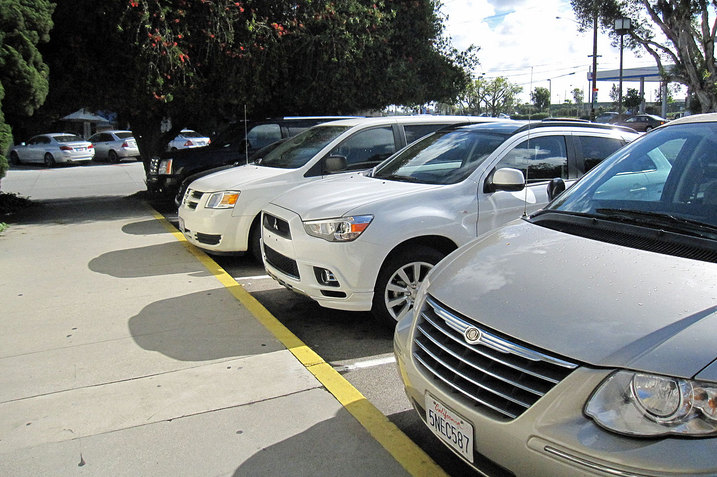
I knew the Mitsubishi Outlander Sport had a flat face, but it really caught my attention when I saw its pug-nose shadow in the parking lot.

First stop on our road trip was Tahoe, and we were lucky enough to be driving our new Mitsubishi Outlander Sport. I say lucky because while we were in Tahoe it snowed 6 feet in town and almost 10 feet in the pass on US-50 and the Outlander's 4wd came in handy.
4wd isn't the only reason taking the Outlander on a road trip was great. In fact the best part of our Outlander on a road trip is the flexibility of the media system, it has RCA/Usb ins, CD player, and satellite radio. Virtually everything you could want to keep you entertained for a 480+ mile road trip our Outlander has it, and it's easy to use with a simple intuitive touch screen. The only real negative that we observed was the amount of road and wind noise when traveling at highway speeds.

If you're a Mitsubishi guy, you might have a T-shirt that says, "4B11." This is of course the name of the stout four-cylinder engine that in turbocharged form makes the Lancer Evolution X go. It's kind of famous.
So if you thinking there's some kind of antiquated, second-rate four-cylinder engine under the hood of the Mitsubishi Outlander Sport, maybe you should think again. You'll find instead a 4B11, which is no bad thing.
This is the engine that Mitsubishi introduced for the new-generation 2008 Lancer. Hyundai actually engineered the fundamental building blocks, which are shared between Chrysler, Hyundai and Mitsubishi. The tuning is down to each company, of course. For the Outlander Sport, this normally aspirated 1,997cc inline-4 puts out 148 hp at 6,000 rpm and 145 lb-ft of torque at 4,200 rpm.
Mitsubishi has put in a lot of the good stuff into this engine. It has electronically controlled, continuously variable valve timing on the intake and exhaust cams, which helps produce at least 120 lb-ft of torque from 2,000 rpm to 6,500 rpm. Resin-coated pistons reduce internal friction, as does the micro-polished surface of the camshaft lobes. The smart-style alternator also reduces frictional losses, and the electric-assist power steering is really important in this respect as well.
Some effort has also been made to make this engine smooth and quiet. The use of hydraulic engine mounts plus a squeeze-cast aluminum bracket on one side and a steel one on the other (the steel reduces gear noise better than aluminum) do their job, and then there's acoustic insulation on the underside of the hood.
If you're trying to motivate 3,371 pounds with all-wheel drive and a CVT to the tune of 24 mpg EPA City/29 mpg Highway and 26 mpg Combined, this is what you're going to get. Frankly, this is very much the kind of power-to-weight ratio we're going to see in the future in sedans, not just entry-level SUVS. So a 10.0-second run to 60 mph and a quarter-mile in 17.5 seconds at 80.1 mph is pretty much what you're going to get. If you want to go faster, you'll be making friends with the gas pump.
For me, it's not the speed that really matters here; instead it's the sound. If the engine sounds willing, then the time passes happily. Unfortunately this engine does not sound happy. It is quiet when it's idling and fairly composed when it's working hard, but everything in between is far from musical. This is what happens when you have a wide range of lightweight materials all vibrating at different frequencies.
Like so many small-displacement engines, this one needs tuning. But it's tuning for noise, vibration and harshness, not power.
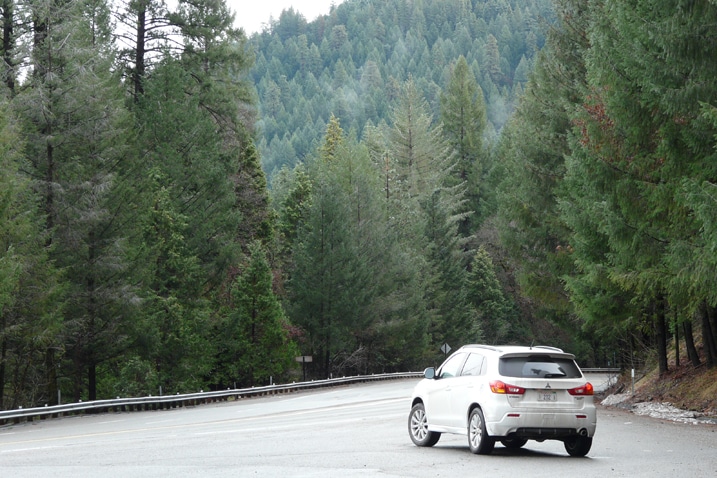
On our road trip today the Mitsubishi Outlander Sport received it's first battle wound. The wound came in the form a rock chip about the size of a dime, located about 3 inches up from the dash and dead center. (picture after the jump)
>

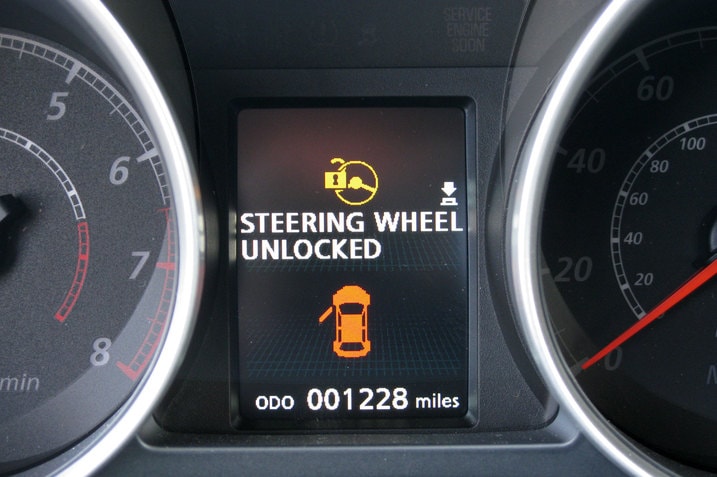
Our 2011 Mitsubishi Outlander Sport has keyless entry and push-button start. I'm a big fan of both features. What I'm not a fan of is the "Steering Wheel Unlocked" warning, which chimes every time I turn off the car.
After awhile the chime made me laugh, though. Do you remember The Club? Maybe Mitsubishi has a secret, backroom deal with the makers of the theft-deterrent device and this is an effort to subliminally restore its popularity.


Miles: 1,087.7 miles
Gallons of gas: 42.474 gallons
Average mpg: 25.61
Most miles on one tank: 359.7 miles
Best mpg from one tank:27.07
4WD used: yes
Fast food stops: 4
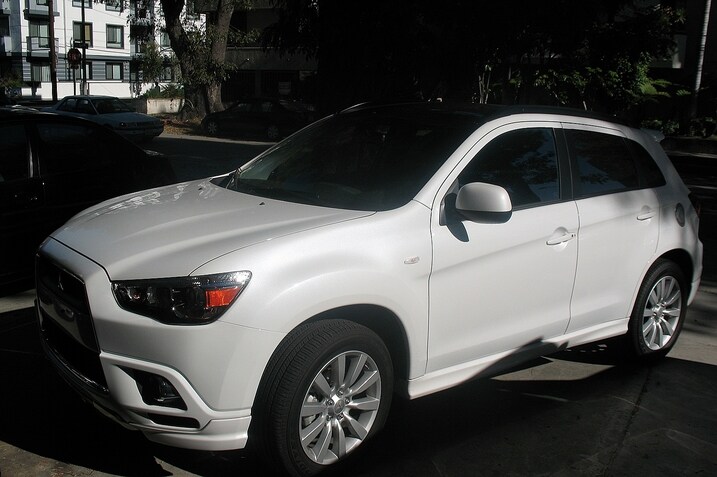
Mitsubishi's November sales were up 47 percent relative to November 2009 and the company says that much of the credit goes to the Outlander Sport.
"The excitement of our sales team and dealer partners for the new Outlander Sport was contagious, because customers responded in a big way," said Mitsubishi Motors North America President & CEO Shin Kurihara. "And the showroom traffic translated into increases for Outlander and some of our other vehicles, as well."
Some of Mitsubishi's November sales highlights follow after the jump, in case you're interested.
-Outlander sales were up 64 percent and are up more than 23 percent for the year to date.
-Endeavor sales nearly quadrupled compared to last year (up 329 percent) and are up more than 34 percent for the year.
-Galant sales were up almost 4 percent compared to last November, and are up 6.6 percent year-to-date.
-Lancer Evolution sales were up more than 46 percent for the month.
-Mitsubishi sales have increased 2.4 percent year-to-date.

The following is a visual list of things that are quicker than our 10-second-to-60 Mitsubishi Outlander Sport.


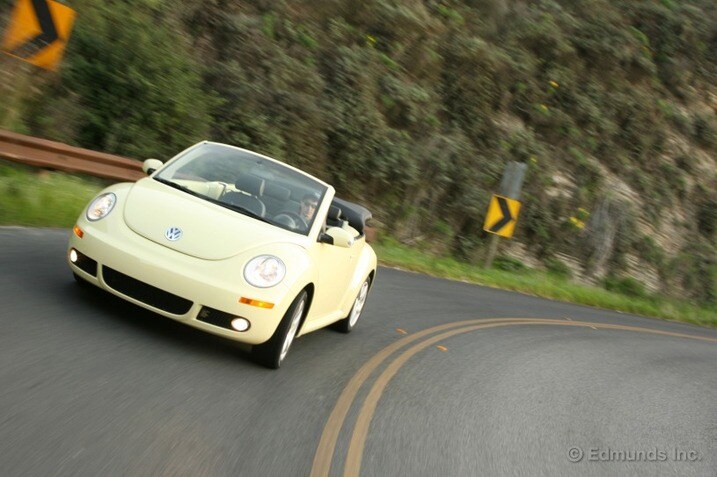
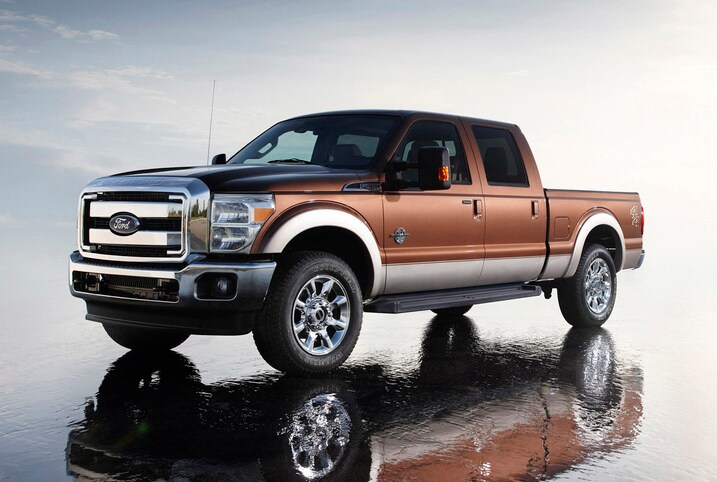
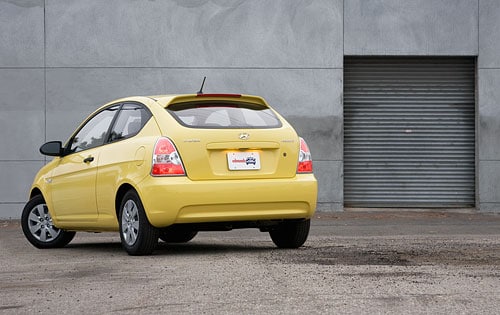
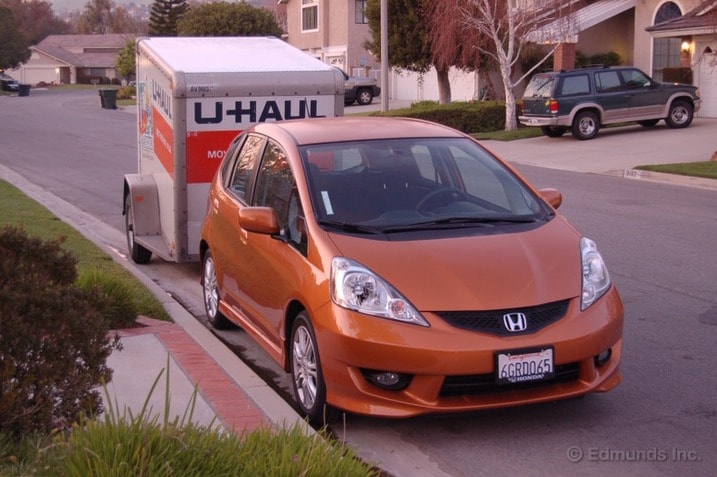
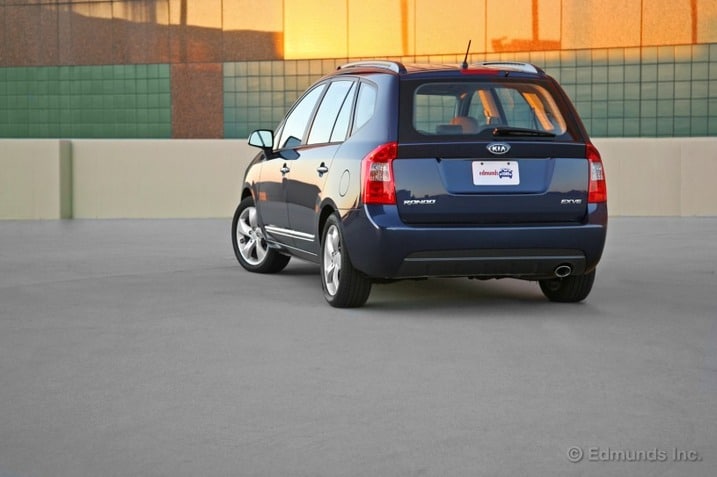

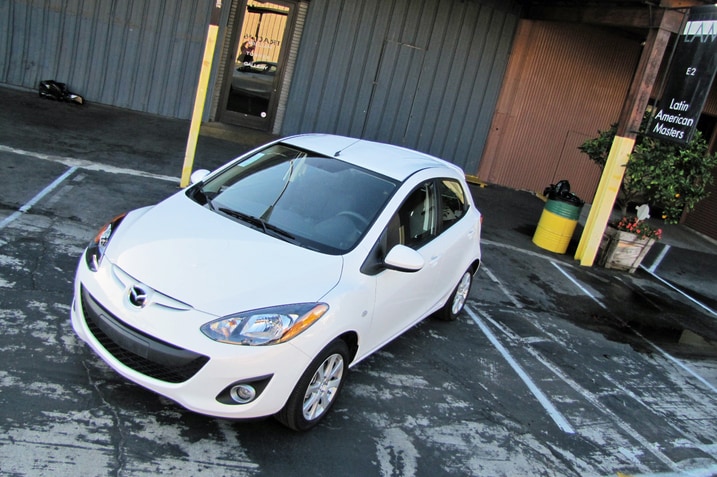




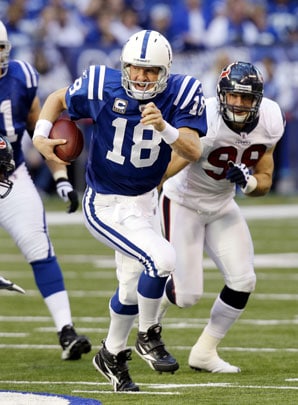

(Barely)
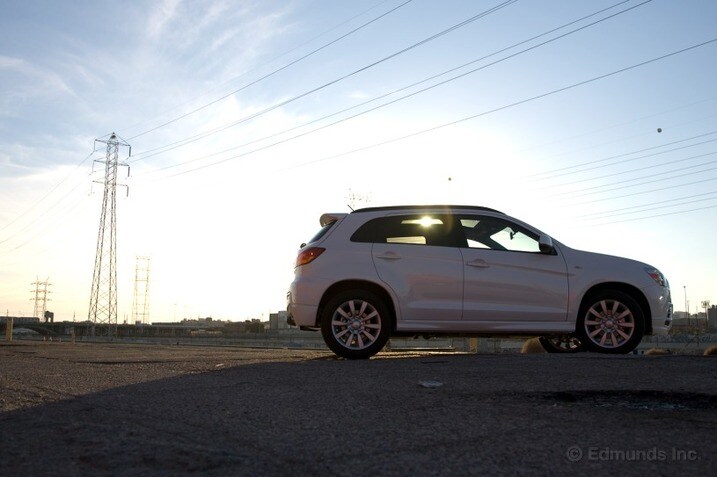
This is the shape of the future.
Small crossovers powered by four-cylinder engines don't get much respect. They are cheap and cheerful utility vehicles, and sometimes more crappy than cheerful. Beneath them you find architecture from small compact cars, like the Honda Civic (CR-V), Hyundai Elantra (Tuscon) and Volkswagen Golf (Tiguan). Underneath the Mitsubishi Outlander Sport you'll find a Mitsubishi Lancer.
But gas prices are starting to climb. Toyota predicts $4 per gallon this year and the former president of Shell Oil is talking about $5 per gallon by next year. And that means fuel-efficient four-cylinder engines will start to look pretty good, even in crossovers.
Vehicles like the Mitsubishi Outlander Sport will be getting respect and we'll all talk about the Dodge Caliber and Honda Element being futuristic vehicles, misunderstood and introduced ahead of their time.
The Outlander Sport seems like a pretty good one of these crossovers with a four-cylinder engine. But one thing to think about is the fact that this Sport SE AWCcarries a price tag of $28,018. We've driven a base model Outlander Sport ES priced at $18,495 and the experience was not cheerful even if it was cheap.
That's the trouble with the shape of the future. It'll be less expensive to run, but it won't really be much cheaper to buy. If you want the nice stuff, you'll still have to pay.

I am evidently the last Edmunds editor to find out that our new long-term 2011 Mitsubishi Outlander Sport has a great, big glass roof. Usually, I don't like the idea of paying for such extravagances, but I am a sucker for Mitsu's Rockford-Fosgate sound systems (one of which is bundled with the roof in the $1,800 Premium package), so I guess I'd be making an exception here.
And indeed the roof serves its intended purpose. It opens up would otherwise be just another
dank
small, dim, grayscale cabin and blurs the psychological line between the compact Outlander Sport and the medium-size Outlander.
Alas, the cabin noise level is notably higher in the Sport than in the Outlander Sr. I could blame the roof, I suppose, but I'd guess the Sport also has less insulation throughout its body, along with one of the segment's noisier four-cylinder engines.

So when I get into the 2011 Mitsubishi Outlander Sport ES AWC last week it's pouring down rain, a fairly remarkable occurrence here in Southern California. The Sport has just returned from a skiing expedition and I look down to see the control knob for the four-wheel-drive system still dialed to its 4wd slot.
Ah, what to do. Do you drive away in 2wd mode or 4wd mode?
Out there in the real world where there's real weather, real people know the moment when it's smart to dial in the AWC knob to four-wheel drive. Meanwhile, the rest of us are wrestling with half-remembered misconceptions about the nature of four-wheel drive and its impact on fuel economy as well as general overall vehicle karma.
As it turns out, only a tickle of torque is being sent to the rear wheels once you engage the Outlander Sport's 4wd system, maybe some 15 percent under steady-state cruising and occasionally as little as 10 percent depending on conditions. There's a torque shift to the rear of 25 percent when you're accelerating hard above 40 mph, and as much as 40 percent when you're accelerating with full throttle at less than 40 mph. When you engage 4wd Lock, 60 percent of the torque is sent to the rear wheels.
The 4wd system's impact on fuel economy is hard to hard to gauge. A two-wheel-drive, CVT-equipped 2011 Mitsubishi Outlander Sport is EPA rated at 25 mpg City/31 mpg Highway and 27 mpg Combined, while a four-wheel-drive, CVT-equipped Outlander Sport is EPA rated at 24 mpg City/29 mpg Highway and 26 mpg Combined. But the difference in the mpg ratings is only because the extra 143 pounds of the 4wd system put the Outland Sport AWC into a different inertia weight class, as the actual testing occurs in 2wd mode. So basically it's hard to know what impact that driving in 4wd mode really has on fuel efficiency.
And then I finally realized that this is entirely the wrong question to ask yourself when you're staring at the 4wd knob. The last thing that you want to tell a tow truck driver as he's dragging your upside-down car out of a ditch is that you were trying to save a dollar of gas by driving in 2wd rather than 4wd.
We carry around all these stereotypes about 4wd, but these days, the weight penalty is minimal, the fuel cost is negligible, and the four-wheel-drive system indeed will get you farther than an extra 100 yards before you get stuck again anyway. Worrying about these things is like worrying that your turn signal will burn out if you use it too much.
The only thing that you should be thinking about when looking down at the 4wd knob is whether the Outlander Sport will drive better. All the other stuff might sound clever, but it's really pointless. Just pick the mode that is best for the kind of driving you're doing at the moment. Out there in the real world where there's real weather, real people already know this.

I just spent most of the day driving our long-term 2011 Mitsubishi Outlander Sport. Nothing too exciting, just running errands and visiting a sick friend down in Irvine, California, about 50 miles south of the Oldham Estate.
And while the Outlander Sport won't be displacing the ZR1 from my Gotta Get One List anytime soon, there is a lot I like about this little crossover. I like the way it rides, I like the way it looks and I really like its seats.
The Outldander Sport's driver's seat is shaped well, sized right and it's not too firm. I find it just right for my 5 ft. 11 in. 180 lbs. bod. I haven't road tripped the Outlander Sport yet, which is of course the ultimate seat test, but I will soon and let you know if I feel the same way about the Mitsu's bucket after a few hours of Interstate.

The steering wheel in our 2011 Mitsubishi Outlander Sport is cockeyed. Not a huge deal, but it'll drive me nuts until we get it taken care of at the crossovers first scheduled service.
By the way, the same thing happened to our Outlander GT? Hmmmmm...

Can't say that I'm all that surprised that the Outlander feels slow. That's what happens when you saddle this much vehicle with 150 horsepower and a CVT. It's a shame too as it looks like it might be a shade sporty on the outside, even says so right there in the name.
Then again, that's pretty much been the promise of very compact SUV built over the last decade or so. The smaller size always makes them look more nimble and fun yet they're always saddled with tiny engines. This Outlander's four-cylinder is so over matched that you just don't even try to go fast. It's slightly relaxing though, like driving my old 200-hp F-250. You just resign yourself to the slow lane and turn on the radio. It's not so bad really, but I probably wouldn't pay $28,000 for it though.
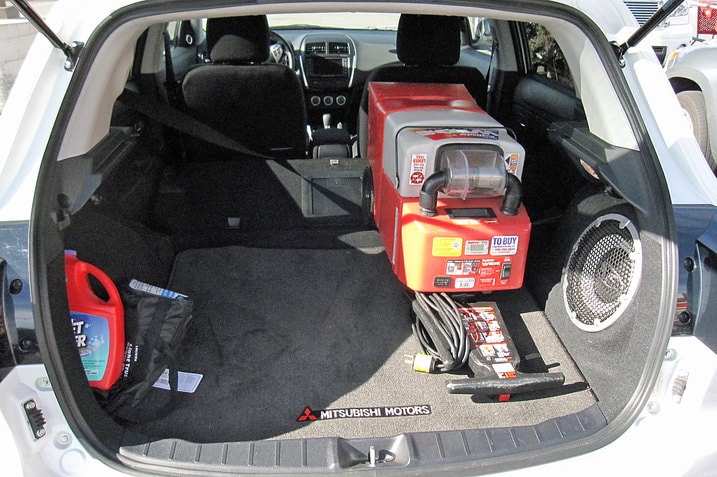
After spending the weekend driving our long-term Chevy Cruze, I started thinking that maybe I was done with SUVs, over crossovers. I mean, I only have one kid, so how much could I really need to own an SUV when a sedan has the convenience of four doors and is generally much easier to drive around town?
That feeling lasted until the next day when I took the Mitsubishi Outlander Sport to pick up a rented carpet cleaner. (Even sprang for the WideTrack model, baby).
Opened the Mitsu's rear hatch and deftly loaded it in.
Not that it wouldn't have been possible to transport the sturdy Rug Doctor in the Cruze, but it was totally painless to toss it in the Sport's cargo hold.

This is the what the Mitsubishi Outlander Sport's navigation display showed this morning as I headed north on the 405 freeway.

This is what the freeway actually looked like in front of me.
Anyone else have an issue with the accuracy of real-time traffic services?

Our longterm 2011 Mitsubishi Outlander Sport blinked up this reminder on the multimedia display for about four seconds upon startup. Caught it out of the corner of my eye. If you're not paying attention to the screen, you could easily miss it.
With that prompt, I dug a bit deeper in search of specifics.

It's 2011, so rather than consulting some arcane wood-pulp tome in the "glove compartment" — seriously, who puts gloves in here? — I pushed the Info button to the right of the central display. This brought up on the touchscreen, among a few other categories, the Maintenance display. Easy peasy.
Looks like we're due for an oil change this time around, but the filter can wait. You know, if we really wanted to. But why bother going back in 3,268 miles just to do the filter when we can simply change both the oil and filter together in one fell swoop?

I washed a lot of cars when I was a kid. And I've always taken pride in cleaning every nook, especially behind the fuel door. When you take your 2011 Mitsubishi Outlander Sport to a quickie handwash that sort of thing doesn't always happen.
See those suds? Below them is a pool of water about a half-inch deep. Maybe I'm crazy, but this kind of thing gets under my skin. I had to dry it up on the spot. So let's hear it. What are your car cleanliness pet peeves?

It's true, as editor Ed said, the 2011 Mitsubishi Outlander Sport is slower than its name implies. And if it was pre-driving school Caroline — when I was afraid to rev an engine for fear of hurting it (my dad, who's not a car guy, taught me that) — I would have to resign myself to driving the Mitsu in the slow lane.
But since I now know that revving is OK, I have no problem downshifting to get that little boost to fly around slower-moving traffic. Another good thing is this Mitsu's size and supportive seats. I feel like I'm wearing it and therefore have no qualms about negotiating traffic, quickly. It handles well, with not too much roll, at least when slaloming Priuses on the 405.
Its track test backs me up: "Slalom: The Outlander Sport suffers from slow steering as well as a sensation that it's rolling from side to side on its springs with little help from the shock absorbers. But the fact that it's so small and narrow made it easy to toss around, and it has a stable and forgiving nature."
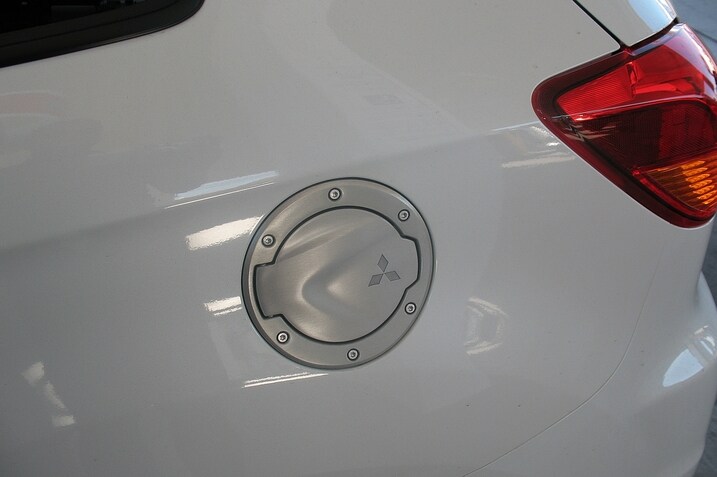
See that? That's our Mitsubishi Outlander Sport's alloy fuel cap. It's part of a $995 Exterior Sport Package that includes a rear spoiler, front corner extensions, rear diffuser garnish and front chrome lower garnish.
All that other stuff in the Sport Package is great, but for some reason, the fuel cap is the feature among these that caught my eye. The cap has an industrial look that strikes me as being quite modern. It looks like it belongs in an expensive downtown loft with exposed brick walls and polished concrete floors.
I don't see alloy fuel caps too often. What do you think of 'em? Thumbs up or thumbs down?

I don't envy those people who're tasked with designing things like car audio interfaces. Seems like for every benefit that comes with a design choice, there's an equally compelling disadvantage.
Take, for example, the Outlander Sport's audio interface. On one hand, I like the fact that the screen contains tons of information and that you can do so much without having to cycle through a series of screens. Your individual presets are identified by name to make things absolutely clear, and you have your banks of presets listed at the top of the screen. The layout scores high marks for ease of use.
Unfortunately, though, including all this data creates a problem: clutter. The screen definitely looks a bit busy to me and it feels like there are too many bits of information competing for my attention. The minimalist aesthetic of the Outlander Sport's cabin is Zen-garden relaxing but when my gaze falls on that crowded red screen it kills the mood.
One thing that I think could definitely stand to go is that "Composer Name" line. "Band" and "Song Title" tell the story, thanks - "Composer Name" feels like overkill.
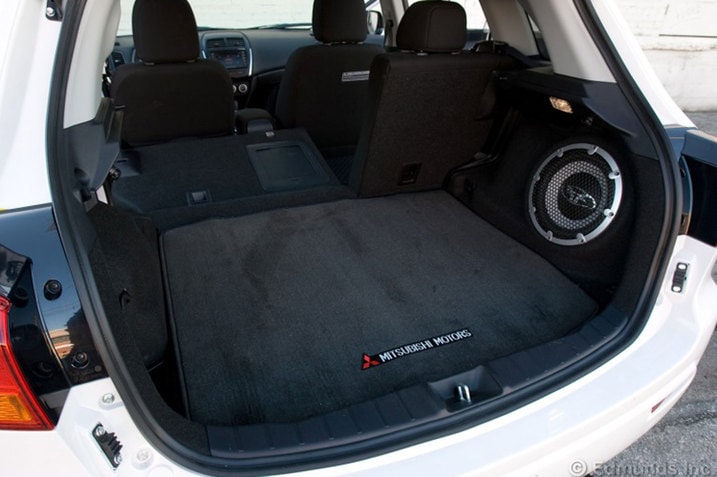
Remote engine start will cost you an extra $450, but there's no option for a power rear liftgate on the Mitsubishi Outlander Sport.
I'd pay $1,000 for a power hatch. It's something I'd use nearly every day.

First quality time with the Outlander Sport. Aye. If Mitsubishi is counting on this car to reverse its ill fortune, start buying gold. I'm still processing my disappointment, but the first date did not go well. Had been driving at highway speeds, without music, for about 20 minutes. Reached over to select Sirius. Music, then a gap. Odd, but not uncommon. Then, again. What the..?
Music, cross under an overpass, gap. Sirius must have a four-second buffer, because almost without fail, four seconds after driving under a bridge or overpass, the music drops out for two, sometimes three seconds - just in time to pass under another signal impediment. Best guess is that the antenna is just not picking up the terrestrial repeaters. Have noticed this in the Outlander GT as well, but with nowhere near the consistency as in the Sportif.
Mitsu sat rad antenna = boo.
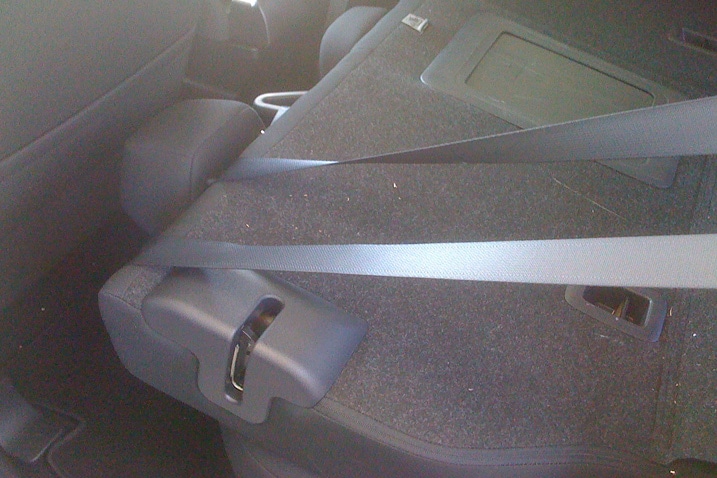
Odd thing about the Outlander Sport's rear seat fold: you can't detach or move the middle seat shoulder belt out of the way. That it has a shoulder belt for the middle seat is cool; they could've cheaped out and just included a lap belt. But it does seem an oversight to not at least notch the belt loop, and offer the option of hanging the belt out of the way.
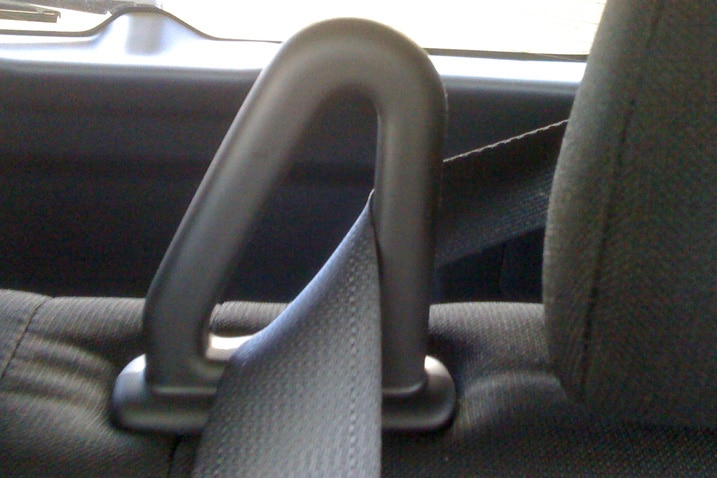
If you want to haul some stuff back there, it requires an inelegant solution:

UPDATE: I'm an idiot, I admit. As one commenter notes, the belt is detachable. Although, in my idiocy, I couldn't figure out exactly how to unlatch it. There's no button release, but there is a notch with some kind of tab. I couldn't jam my finger or thumb in there to unlatch it, couldn't press on it with a credit card, and didn't have a key, as the Sportif features a keyless ignition. Anyone else have experience with this?
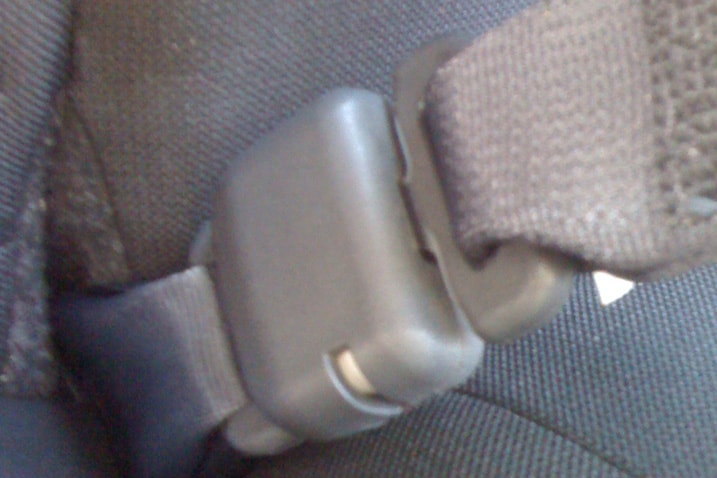
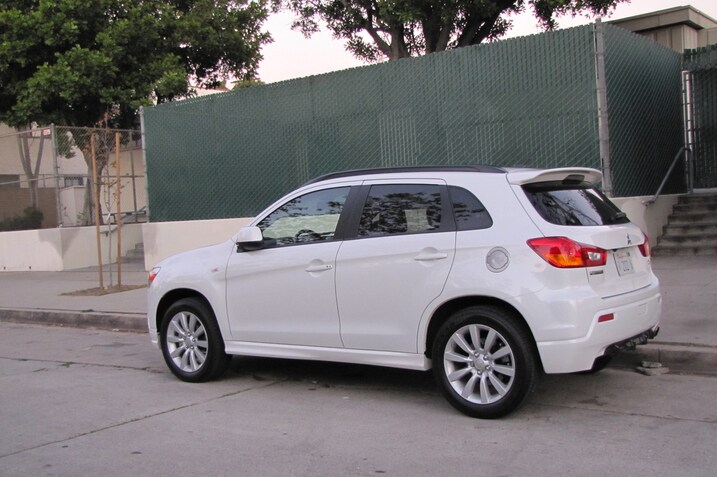
Doesn't the back of the Mitsubishi Outlander Sport look like it's been smushed? As if it used to have a bigger caboose, but was somehow melted to the softness of clay and then slowly run into by a cab-over big rig? You know, these benchmarks of aerodynamic efficiency? The O Sport's proportions just seem a bit off.
Actually, the back of it sort of reminds me of Apple Cat, the weirdo peke-faced kitty owned by Takahashi's girlfriend who reduces everyone who sees it to giggle. Well, maybe just me to giggle. It reduces Magrath to putting pictures of it on his Facebook. You'll see what I mean after the jump.
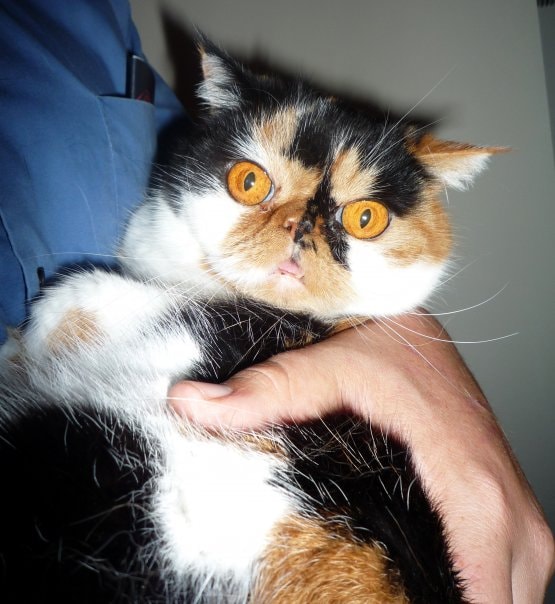
Yes, I have just put a picture of a cat on the blog, but I've been told that increases your chances of being passed about social media sites. And, you know, it makes me giggle.

I'm the type of guy who pulls for the underdog, and that includes Mitsubishi. I've crowed to anyone who will listen how my dad's 2001 Galant has been a gem. Bought it new and it's given him not a lick of trouble in 130k miles apart from a recently departed A/C compressor. And it performs and rides like it has half that mileage.
But I have to say I'm disappointed with Mitsu's misnamed compact crossover...
Outlander SPORT?! Are you kidding? Don't get me wrong — I'm not some single-minded gearhead that demands rip-snorting acceleration out of even four-cylinder-powered utilitarian vehicles. But this thing feels like it just rolled out of bed when you lean into it. And it even sounds annoyed when you do so.
Part of the blame lies with the CVT, which feels like it's doing its part to suck the life out of the engine. Yes, working the tranny manually helps as you can keep the revs up to get somewhat peppy performance, but that's gonna hurt the fuel mileage. Maybe a manual gearbox would be a better choice. Never mind — that's only available on the the entry-level ES. Besides, although a real manual version would be more spirited and fun to drive, the reality is most folks shopping this segment get automatics.
Granted, these impressions are just based on my commute — perhaps a stint on a twisty two-laner or a long road trip may earn it some more favorable comments. But for now — and as a daily commuter — no thanks. If I wanted a small crossover SUV that has "Sport" in its character and not just in its model name, I'd go with a Kia Sportage or Hyundai Tucson, hands down.
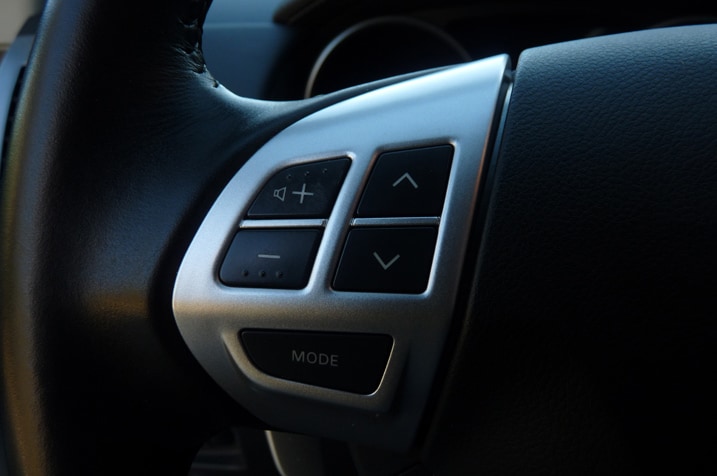
The Outlander SE has one of my stereo-system pet peeves: adjacent volume up/down and track-skip forward/back buttons on the steering wheel. Few things are more frustrating than, just when you feel like cranking a favorite tune, instead of the hitting the volume-up button a thumb strays over to the track-skip button and — DOH! — the moment's over. Call it music interruptus.
I know, I know ... this is one of those nitpicking journalist critiques and you'd probably get used to this after it happens about two hundred times. But you're supposed to be able to operate these buttons by feel, without looking down. And Mitsubishi isn't the only offender that comes to mind.
For years Jaguar has placed these two essential stereo buttons side-by-side on the steering wheel, and they're also similarly shaped. And I've had the same frustrating experience.
Is it too much to ask to keep them separated, as some automakers do? Or at least that they have a different shape and feel?
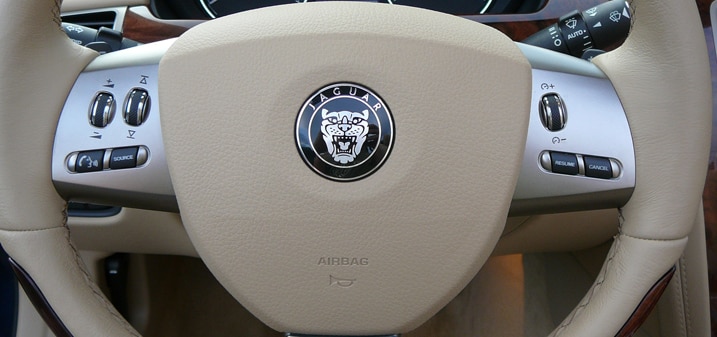

It's February, so as soon as millions of us switched on the car this morning, we went right for the seat heater.
This is not because we are all wimps. (Well, some of us are, actually.) Instead it's because we're sitting in leather-upholstered seats.
And leather is the worst in winter.
Actually leather is the worst in the summer, too. It's freezing in the winter and scorching hot in the summer, and squeaks all the time. As far as the general quality of leather upholstery, it is a throwback to vinyl seat upholstery of the 1950s, when everyone thought that plastic would save the world.
Thanks to the fast food industry, leather upholstery is pretty cheap these days. And also thanks to the fast food industry, the prime attribute many Americans look for in leather automotive upholstery is the ability to execute a quick cleanup when our hamburgers spontaneously disassemble and we spill some ketchup.
As the Mitsubishi Outlander Sport reminds me, cloth upholstery (well, it's actually still plastic) is so much better. It's neither freezes nor scorches, and it grips you securely enough to keep you from sloshing over against the door on the freeway ramp. And it cleans up great. Well, it cleans up great unless you get some kind of camelhair color and then let guys who have been crawling around on hot asphalt take a seat (remember that long-term 2006 Hyundai Sonata LX?).
As much as I enjoy fine leather upholstery, my choice for daily use would always be cloth. Of course, the number of American drivers who pick cloth upholstery because of anything other than an attempt to lower their monthly car payment must be incredibly small.
The Outlander Sport does have seat heaters, by the way.
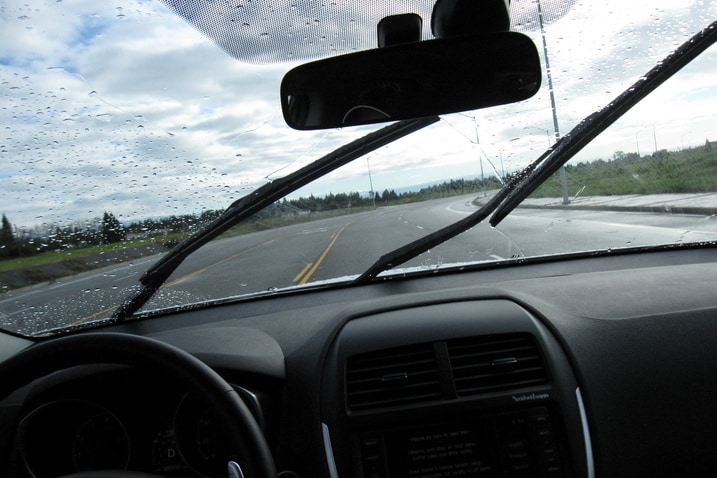
Found to my surprise that our Outlander Sport has rain-sensing wipers, too, just like our 528i. They come standard on the SE trim ($21,695 base price). The operation (matching wiper speed to the amount of rain) didn't seem as quite as ideal as the BMW's, but otherwise it's all the same benefits (or negatives, depending on your view) as everybody noted in the 528i comments.
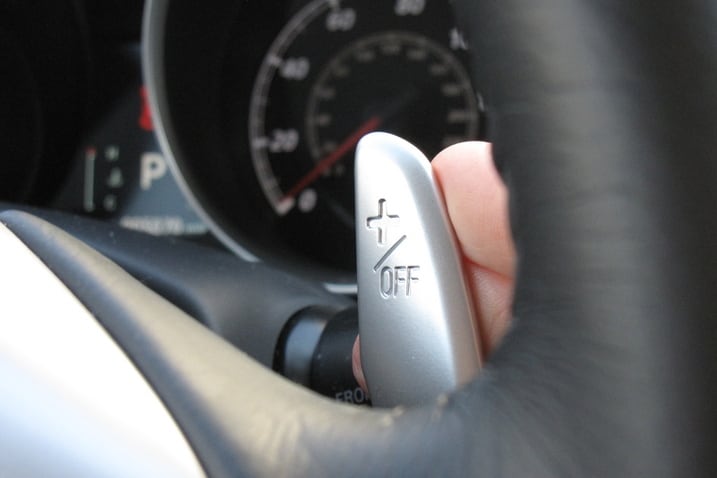
On our regular Outlander, I've found its shift paddles enhance the model's sportiness, even though their overall usefulness is pretty minimal. On our Outlander Sport, though, I've found the paddles are key to avoiding an otherwise dreary driving experience.
The issue isn't so much the power of the engine but more the way Mitsubishi tuned the CVT. Accelerating from a stop, the CVT increases rpm to a decent level for power, but after about 25 mph it drops rpm back down to improve fuel economy. Consequently, the Outlander Sport does its to be a paradigm for "sluggish acceleration." The only way to avoid this is to step down more on the throttle to the point where the CVT "downshifts" or just switch into manual mode for the paddles and shift yourself to get the engine rpm you want.
I don't necessarily blame Mitsubishi. Whether it’s the sluggish throttle response on our 528i or the skip-shift feature on our Mustang, it's obvious automakers these days are looking for inexpensive ways to boost fuel economy for EPA estimates. But in the real world, it just doesn't work for the Outlander Sport. I'm just glad for its paddle shifters.
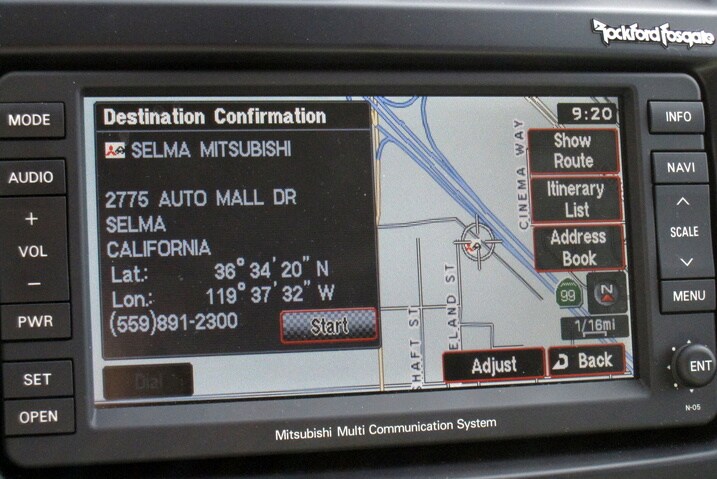
Yesterday I attempted to schedule a service appointment for our Outlander Sport at my nearest Mitsubishi dealer. It's been a while since I've had such an interesting experience trying to get somebody to take my money.
Because I work remotely about 250 miles from our office, I usually drive each long-term car for a two-week stint before coming back to the office. So last week when I swapped into Outlander Sport, car wrangler Rex told me it was due for its first service. "No problem," I said, "I'll take care of it next week."
I live in Fresno, but the local Mitsubishi dealership in Fresno closed a couple years ago. The next nearest dealership for me is Selma Mitsubishi, about 22 miles from my house. That dealership is part of the Selma Auto Mall (Honda, Chevy, Nissan, Mazda, Hyundai, Kia, Suzuki, and Mitsu). So when you call, you go through a main operator who directs your call. I asked for "Mitsubishi service."
The operator transferred me. The phone rang about four times, and then I got a beep, but no greeting. Hmm. Hung up. Tried again, telling the operator that nobody answered. She said she'd page the service department. OK, great. So the phone rang again for about six times. Then I got disconnected.
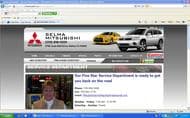
I thought about trying again, but I happened to have the Selma Mitsubishi dealer webpage up. There was a link to schedule your appointment online. Plus, 10 percent off by scheduling online, it said! So I tried that, filling out the online form with my information and our Outlander Sport's. After completion, the site said somebody would call me to confirm my requested appointment.
I waited a few more hours. No call, no email. I decided to try calling once more. I was transferred and encountered the same no-greeting beep. This time I left a voice mail, saying I wanted to make an appointment for service.
Well, either way, more than 24 hours later, I haven't received any contact from Selma Mitsubishi. I'd actually be pretty annoyed at this point, but thankfully, I've since discovered by checking the owner's manual that in fact our Outlander Sport isn't due for service for another 2,500 miles (at 7,500 miles). So I'll be passing the buck, where we'll mostly likely be taking our Sport to the same Long Beach Mitsubishi dealership that our regular Outlander has gone.
Selma Mitsubishi service department gets a thumbs-down.
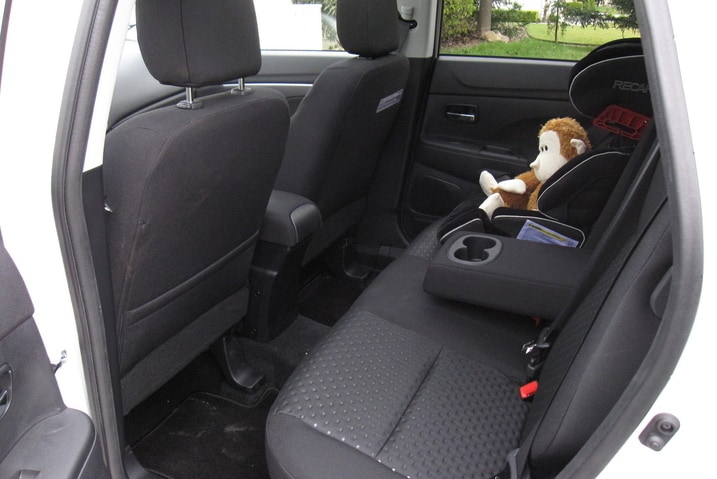
Since the Outlander Sport is smaller than the regular Outlander, I was curious to find out how comfortable the backseat is. First I compared the two on Edmunds; the Sport measures about 3 inches less in rear legroom (36.3) and just a tad less headroom (37.9). Our Sport does have the panoramic sunroof, so that does take out an additional inch or so.
The rear doors don't open all that wide, so entry/exit is mediocre. Once seated, I found the loss in rear legroom to be minor; there's still plenty of room for adult-sized legs. There's lots of room underneath the front seats to put your feet, too. Headroom is OK, though I'm guessing anyone taller than 5-foot 11-inches will have his or her head rubbing against the headliner.
The main issue is that I just didn't find the seating to be very comfortable. The cushioning is hard and flat, and the seatback is
very
fairly upright. There isn't any sliding
or reclining
action like you get with the regular Outlander. It's a little like sitting on a park bench. This does make it super easy to install a child safety seat, though.
I'm guessing most owners won't be using their Outlander Sports for frequent multi-passenger transportation. So from that viewpoint, the Outlander's backseat is just fine for little kid duty or occasions like taking co-workers to lunch.
Update: fushigi comented that the rear seats do in fact recline, and upon further inspection I realized he's right. I think the rest of my comments still apply, but the more reclined position does help comfort some.
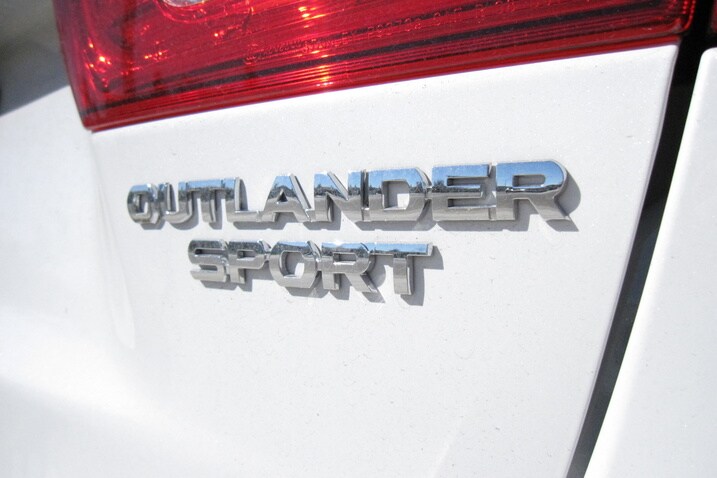
1) Sporty styling. Typically small crossovers are as generic as Kirkland. But the Outlander Sport looks sharp.
2) The sunroof. Liked a couple of us have noted before, it's really pretty impressive in the way it airs out the cabin when open.
3) Easy to park. Driving a vehicle with a small footprint is always nice.
4) Cargo space. Sometimes I need more space than a sedan's trunk for a bulky item, but not that much more. The Sport's 50 cubic feet is sufficient for a lot of slightly extraordinary tasks.
5) Shift paddles. They're a useful workaround for the economy-tuned CVT.

I tried hooking up my iPod Touch (newest fourth generation) to our Outlander Sport today for the first time and found it wouldn't connect. Unfortunately, I can't remember if ever tried it out in our regular Outlander, which has a pretty much identical sound system. (I'll test it out later this week.) I was able to get my iPod to sync up using the Sport's streaming Bluetooth audio, though it didn't offer full control, only the skipping of songs.
Here is a short video highlighting the single best feature of the Outlander Sport: Panaramic Sun Roof.
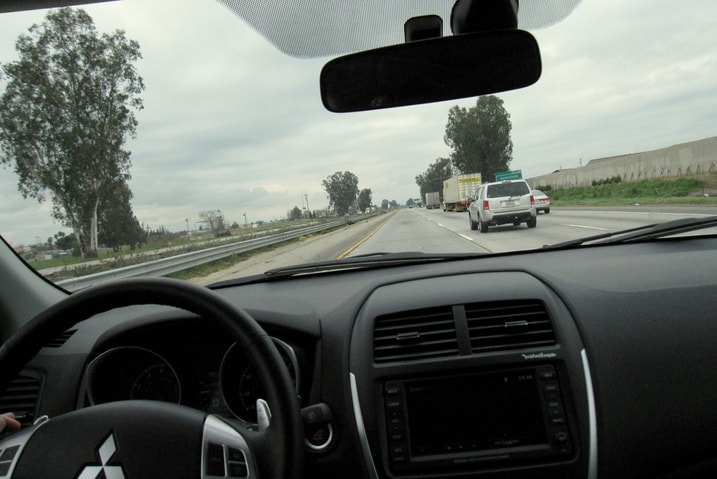
Our Outlander Sport is a decent urban runabout. But I haven't found it particularly enjoyable for long-distance driving on the freeway. There are a couple reasons. One is noise. Road noise is prominent at times, and the car's big side mirrors kick up a fair amount of wind noise. This isn't to say that the O-Sport is making a racket — in testing, we measured 69.2 db at 70 mph, compared to 72.9 db for our notably noisy Mazda 2 and 67.1 db for our Chevy Cruze — but in general I find myself noticing wind, road and engine noise more in our Sport than I do in most other long-term cars.
I also haven't found the driver seat to be all that comfortable — the cushioning is too flat and firm for my tastes. Oldham wrote he liked the comfort, though, so there would seem to be a divergent opinion here. I do like having a telescoping steering wheel, something our regular Outlander doesn't have.

"I'll be here until 5 if you want to come back."
That's what the guy at the flea market told me as I handed him cash for the two steel carts I just bought. He didn't think I could fit them into my car. Honestly, I had the same worries, but I didn't say anything. My lady did, however.
"I don't know, Scott. I think we have to come back."

Victory!
The Outlander Sport is not a big vehicle. But thankfully the 48.8 cubic feet (with the seats folded down) was just enough to stuff those two carts into the rear of the vehicle. I had about an inch to spare. Placing a spare fleece over the end was enough to protect the hatch from scratches.
I really appreciated the fact I only had to make one trip. It would have been a pain in the butt to drive across town a couple of times. Though I'm still not a fan of the CVT and weak engine, our Outlander Sport has definitely grown on me a little more this past weekend.
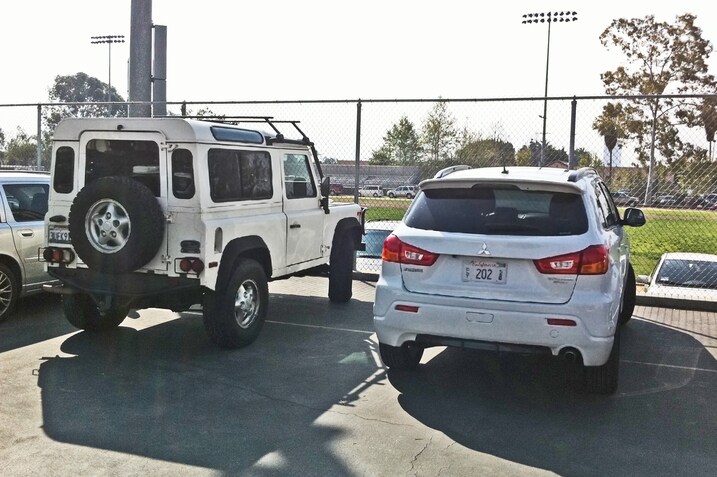
Right after I closed the hatch to our Outlander Sport, this beauty pulled up next to me. Sorry for the crappy picture, but I was shooting into the sun with a weak point-n-shoot.
The owner noticed me gawking at his Rover so we chatted for a few minutes. Dave told me that he's owned it for 10 years. It's a '97 automatic with 75k miles on it. Hardtop, too. Sexy.
I ask a question, to quote the Black Sheep: You can get with this, or you can get with that. Which would you choose?

The styling of our long-term 2011 Mitsubishi Outlander Sport SE AWC is taut, muscular, and purposeful, with short overhangs. It reminds me of its Dakar Rally cousins. To me the styling of our Outlander Sport is closer to the race Pajeros than the production Pajero.
I love the Dakar Rally and the race Pajeros. Some of you will see the lineage — you could imagine a body kit and race replica paint on our AWD car. Others will think I'm viewing our Outlander Sport through rose-colored beer googles.
In any event, our Outlander Sport doesn't have the nads to back up these looks. The 2.0-liter I4 engine wheezes out only 148 hp and 143 lb-ft of torque. The CVT shift paddles help somewhat. And the steering is dead — not even close to that of our Outlander GT.
(Bonus: Dakar Pajero race video on the jump.)

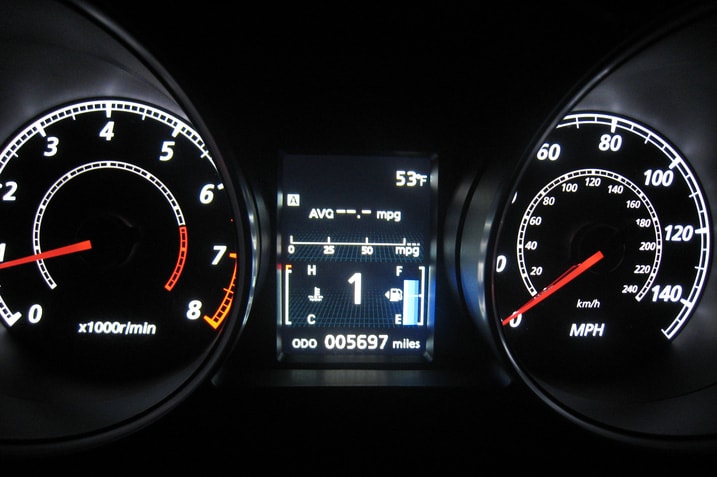
My colleague Brent Romans said it best in this eloquent post on the necessity of paddle shifters in this crossover. I'll just second his comments here.
When I jumped into the Outlander Sport, I hadn't done any model homework and I didn't know that it has a continuously variable transmission. Now I know it does and I know I hate how it feels on acceleration. As Brent said, it's only the paddle shifters (and the pleasure of watching gear "shifts" on the display) that make the drive bearable.

The free 3-months Sirius subscription on our Outlander Sport ran out recently so I notified keeper of the keys Mike Schmidt, who said he'd renew our subscription. Without the soothing sounds of my decades or classic rock stations coming through the speakers, it was rougher than normal driving in L.A.'s notorious traffic last night. Yep, nearly 1.5 hours to go 21 miles without my iPod nor satellite radio. I found the commercials, yammering DJs and "you're screwed" traffic reports of standard radio so annoying I just shut it off.
When satellite radio first debuted back in the '90s, I remember thinking "Why would anyone pay anything just for more (albeit commercial-free) radio stations?" Now there's not a doubt in my mind that I'd opt for it — well worth the 13 bucks a month for me.
What say y'all?
2011 Mitsubishi Outlander Sport Wins 3 World Records
The 2011 Mitsubishi Outlander Sport is a Guinness World Record holder. Mitsubishi took the Sport and the 2011 Outlander to Ghost Lake in Alberta, Canada, with Guinness World Records along for the ride to try and break as many world records in 24 hours.
The result?
The Outlander Sport broke the following records:
300 m — The greatest distance by a vehicle in reverse on snow in 30 seconds
56.2 m — The shortest braking distance by a vehicle on ice (30-0)
1:11 min — The fastest vehicle slalom relay on ice (1/4 mile)
That's all awesome and stuff, but would these record-breaking skills on ice appeal to the average consumer? You tell me.
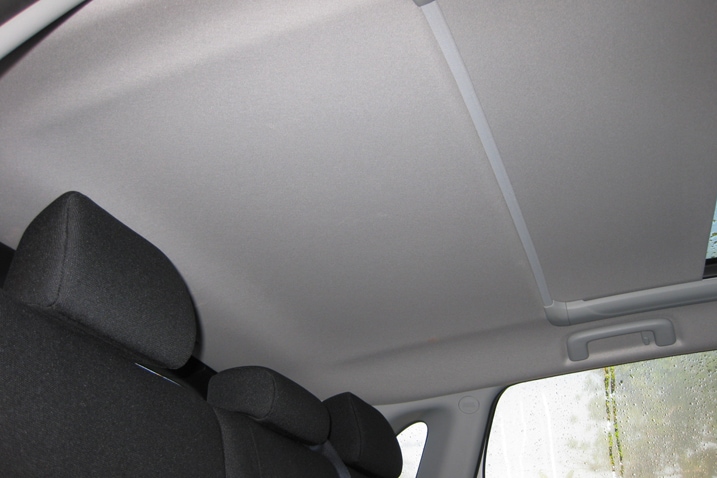
The flipside to the O-Sport's great observatory sunroof: near total darkness at night. There are no overheard lights for the rear seat. Not a big deal if your passengers aren't trying to read a map. But a bigger deal when you're parked under dim streetlamps, or in a parking garage, and trying to fetch something from the rear seat or load items into the floor area. I'm curious why Mitsubishi didn't run an adjustable airplane-style reading light next to the grab handles.
Meanwhile, in the cargo area, you get a single, small lamp mounted just above the Rockford Fosgate subwoofer.

After 6,000 miles, multiple drivers and a couple of road trips, a new car smell still - remarkably - permeates our Outlander Sport. Mind you, the scent is curiously like that of a giant Band-Aid, leading me to believe that one of the staffers recently loaded up the O-Sport with several hundred rolls of athletic tape. Either that or the seat fabric and dash plastics were cooked up in a Johnson & Johnson lab.
Regardless, the Outlander Sport appeals in a way that I'm still trying to pin down.
Maybe it's the utility. I'm a sucker for utility. It's why I still own a Jeep Cherokee that I bought new in 2001, despite the Significant Other's protests every time a significant repair comes due. The Outlander Sport states its usefulness as soon as you climb in. The coarse texture of the synthetic seat fabric assures you it's no big deal if you track some sand, snow or mud on the seats. And you might feel a little wanderlust looking down at the 2WD/AWD/Lock dial, thinking that the Sport could be your ticket out of the humdrum. You could probably drive to Pavones in this thing.
The widescreen sunglass is a genius stroke and seems to add three feet of headroom. Probably be pretty sweet to drive through the redwoods and glance up through that glass.
I found the Sport's sweet spot on the highway the other day. Winter kissed off with a low-pressure front that brought steady rain, fast wind and thunder through the area, hanging around long enough to complicate the morning drive. As it progressed from drops to downpour, and the mist started to hamper visibility, I slotted the Sport into AWD and cruised between 40-55 mph. It felt solid and planted. No engine whine, no agitation about trying to keep up with regular highway speeds. Total enthusiasm for mowing straight through pooled water in lane depressions. For a minute, it seemed capable of chasing tornados.
But then, there's the bad. The non-adjustable lumbar lump in the driver's seat. The Bluetooth phone connection that outputs your caller's voice through the passenger side door speaker. Which then forces you to lean to the passenger seat, balancing on the armrest and your left-hand on the steering wheel at 12 o'clock, just to hear. And you'll need to lean alright, because that buzzing four-cylinder and CVT combo behind the firewall isn't gonna quiet itself. Nothing sporty about it.
How Mitsu sent the Outlander Sport into the world so thoroughly undergunned baffles me. Pushing it out of the nest at 3,200 pounds, yet with only 145 hp and 148 lb-ft to its name — well, it's the parental equivalent of sending your child into the workforce with an English degree.
The CVT does all it can to sap the engine of any spirit. With a little practice, you learn to nearly bounce it off redline in "first," grab the paddle for a shift while applying more throttle in "second," until the last torque reserves catch up and you finally feel like you have some acceleration on demand.
I know that the Sport fits a new paradigm of small-engine sport-crossover-wago-ute, and that its underwhelming locomotion probably helps Mitsubishi's fleet fuel economy average. Maybe they're saving the real power for the Pajero, a global favorite and an SUV we'd like to see in the States. Maybe the current O-Sport is simply marking time until Mitsu can deliver some kind of gas/electric Outlander. But from a company that traditionally does turbo well, it's disappointing not to have put some boost under the O-Sport. Purpose maybe, but no power.
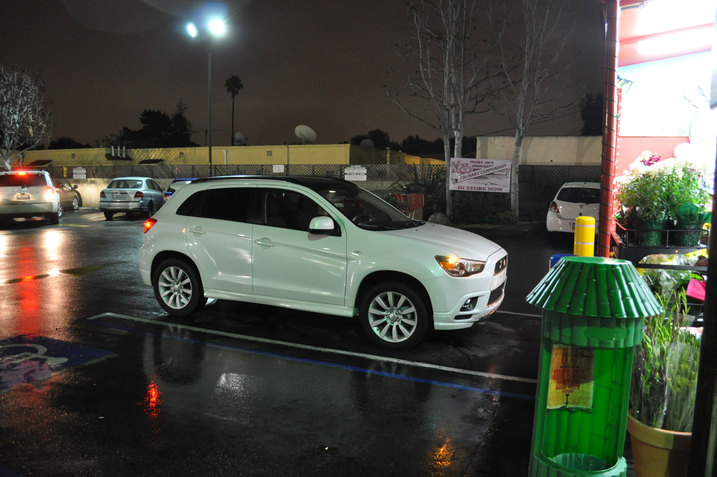
Last night, there wasn't much sport to my life. Our long-term 2011 Mitsubishi Outlander Sport and I went to Trader Joe's in the rain; then, we drove 25 miles out to the San Gabriel Valley in a downpour. I turned the dial on the Outlander Sport's console from 2WD to 4WD (because I felt like it), but it was slick out there, no matter what your tires or drive wheels. On the way home, I drove by a nice new E92 coupe that had just been punted into the wall on the East LA interchange. Too bad, guy.
On this night, though, the Outlander Sport perfectly satisfied my transportation requirements.
You've likely gotten the impression that our Outlander Sport doesn't really have an engine under-hood. This is sadly true. This 148-hp 2.0-liter is a slightly lower-power version of the engine we had in our old long-term 2008 Lancer GTS, which was maybe 100 pounds lighter and equally slow. Except that we had a nice five-speed manual gearbox to keep us occupied in the Lancer, instead of the Sport's fun-killing CVT. (You can get a manual if you order a base O'Sport ES.)
Never mind that, though, because last night I was all about steeaaddy-as-she-goes acceleration up to 65 mph, and the O'Sport does that just fine. Meanwhile, various V6 Camrys around me were flooring it, scaring themselves, then slamming on the brakes. Also, as a bonus, I couldn't really hear the usual engine racket from the Mitsu's 2.0-liter over the rain and my public radio.
Visibility was good, as the Outlander Sport has HID low-beams, foglights and rain-sensing wipers. I hadn't realized it had the auto wipers before I set, but it started taking care of me in that regard as soon as I started the engine.
I also like the O'Sport's ride, which is very similar to Outlander Sr., as it offers reasonable comfort and good control over expansion joints and bumps. The electric-assist power steering is well calibrated, too. There's a steady, secure feel on center, with pretty natural effort levels off center and good precision.
Mind you, there are plenty of vehicles out there that could have provided the same experience last night, but I happened to be in the Outlander Sport and it happened to be a fairly pleasant experience.

Radioactive mustard? No. Mood lighting!
It's too bad you only get to see this at night because that's the only time I can stand driving with our Sporty's sun shade open. Even on a cool, cloudy day, all that glass turns the inside of the Outlander into a low grade Easy Bake Oven.
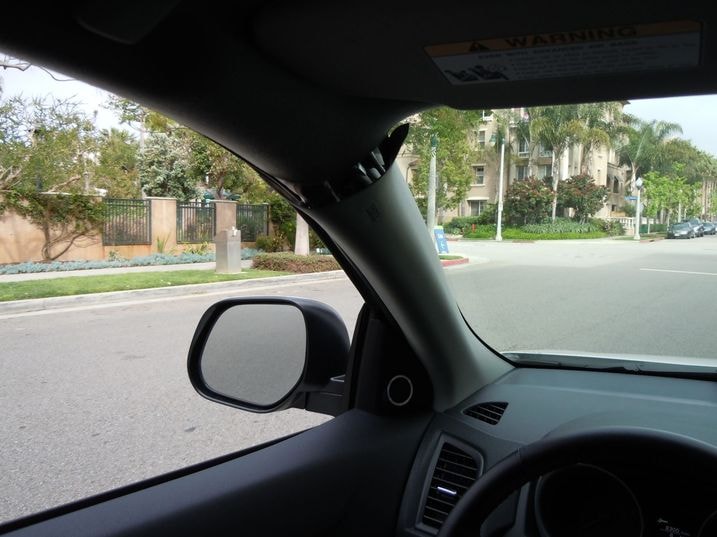
So this happened. I found it like this when I got into our long-term 2011 Mitsubishi Outlander Sport SE last night. I don't know if someone was overly enthusiastic with a door slam, or it just spontaneously disassembled. Either way, this is unusual.
I tried to gently press the plastic piece back into place, exercising caution as the A-pillar is marked indicating there is an airbag in there. No Joy — the small tabs aren't catching on either side of the plastic.
It doesn't interfere at all with driving, so we may just leave it until the next scheduled service.
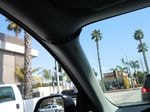
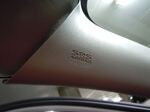
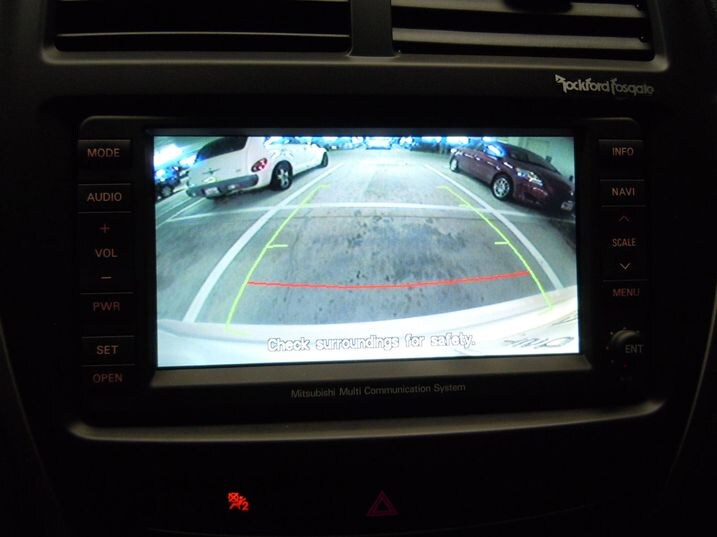
Our long-term 2011 Mitsubishi Outlander Sport SE not only has a nice back-up camera display, it also has trajectory and proximity guidelines like many new cars equipped with back-up cameras. I love these lines, as long as they aren't overdone.
It's so easy to back up into a space. Parallel parking is a breeze. And parking at night is so much easier. With many cars it's difficult to determine your range to that next vehicle, but that red proximity line is quite helpful.
Of course, you should not use the camera display exclusively, instead only glancing at it intially and periodically during your backing maneuver.
Yeah, I know that some of you think you can back up fine at 50 mph, while blindfolded and inverted.
But back-up cameras with guidelines are helpful to all decent drivers. Like you and me.

The Outlander Sport's loose A pillar trim piece was bugging me so I took a closer look. Seems that nothing was actually broken but rather a fastener somehow freed itself. The trim piece has a semicircular hook of sorts that must be pushed upwards to engage the fastener on the inner part of the A pillar. So I carefully lined the hook up, pressed the trim piece firmly towards the A pillar (making sure the rubber seal didn't get caught within) and then gave it a solid, but not all-out thump with my hand to engage the fastener. Done deal.

Here on the Westside of L.A., space in general and parking spots in particular are at a premium. Many strip plazas have these sub-standard-sized "compact" spots that are rather short and narrow. The Outlander Sport, with its Pug nose and clipped rear end, is perfect for these environs with its genuinely compact dimensions. Its size and the available rearview camera take a lot of the hassle out of parking in these "pack-em-in" parking lots.

I'm not a big fan of our Outlander Sport. Like our TSX Sport Wagon, I don't think the Mitsubishi deserves the "Sport" in its name. With a bovine groan under weak acceleration and lazy handling, this is pretty much the antithesis of sport in my book. But commend the manufacturer for adding the paddle shifter, which I think is one of the best executions of this type.
Mitsubishi nailed it with the dual-clutch transmission in the Evo. Now, I know the Outlander Sport's is a CVT with simulated gears, but the paddles are the same. Note to all car manufacturers: Mount the paddles to the steering column, the right paddle is an upshift and the left is a downshift. I absolutely hate paddles that are mounted to the wheel, primarily because it keeps you from selecting a gear mid-turn. As a shuffle-steer driver, the Mitsubishi's paddles are always in the perfect spot.
Some might contend that a car like this doesn't need paddle shifters, and I agree. But at least they did it right. On a few downhill grades, this option certainly came in handy. Too bad there's no rev-matching, though.

So I took our Outlander Sport (the Sport is the little Outlander) off onto a gravel path the other day and I wondered, "Is this the extent of the little Sport's off-road prowess?"
Many of these QUV's (Questionable Utility Vehicles - that's right, you heard that here first) hint at having some off-road ability, with their high-ish ground clearance and selectable 4-wheel drive, but can they do anything. Can they really drive off-road?
Dan Edmunds (seriously, his last name is a coincidence - he's not the owner) led our Countryman into unpaved territory and it got me to thinking how our other QUV's stack up.
Since we have three of these things at our long-term disposal (Juke, Outlander Sport and Countryman), who else would like to see a silty showdown? I promise to take pictures.

Kind of wish Mitsubishi had used it. This is little four-cylinder is modern, efficient and reasonably powerful, but it struggles in this particular application. I figured that after more seat time I would get used to its modest powerband. I haven't.
The CVT sure doesn't help. When you have a small engine that's struggling to remain smooth while winding its heart out, a CVT only makes it worse.
Apart from the engine's lack of punch, I still like the general driving experience in the Outlander. Solid suspension tuning, minimal road noise and decent steering make it a good errand runner. Still looks way better than a CR-V too.

The navigation system in our 2011 Mitsubishi Outlander Sport has a neat feature I've rarely, if ever, seen before. When selecting a route, it asks if you'll be using the HOV lane, otherwise known as the carpool lane. They call it Diamond Lane Guide but, like all things Mitsubishi, the "Diamond" is a symbol, a one-third chunk of the Mitsubishi diamond-star logo.
This is pretty mega around here because a freeway intersection like the 91 east to the 5 south shown above is a right lane exit if you're in the regular lanes but it's a left lane exit if you've told the nav system you qualify for carpool lanes. This is not a permanent setting, either — it's pretty easy to change the HOV status once you've dropped off your carpool buddy.
Most other systems would direct anyone and everyone at this point to the right lane to take 5 south, which isn't the right way to go if you're rocking the HOV lane. Trust me, no one benefits when tourists knife across 4 lanes of traffic needlessly on their way to Disneyland.

It has been noted that our long-term 2011 Mitsubishi Outlander Sport is long on looks and short on performance. Witness the faux rear diffuser that is so high off the deck it could not possibly have any aero effect.
Still, it's a good looking car: one of the best looking compact SUV "Cute Utes."
Like many of you, I'm waiting for the Ralliart version.

Our 2010 Mitsubishi Outlander GT had an early service appointment today at the Mitsu dealer, and I followed Long-Term Fleet Captain Mike Schmidt over there in the 2011 Outlander Sport to drop it off.
I've always thought it was odd that we have two white Mitsubishis in our test fleet at the same time.
From the looks of this pic taken at the service center, you'd think white is all they sell.

Interior glare seems to be the flavor of the month around here. But it's an important element of interior design. We've seen the 2011 Buick Regal, 2011 Infiniti M56 and 2011 Kia Optima all struggle with the issue. Well, our 2011 Mitsubishi Outlander Sport does it right.
I won't make excuses for the overall interior materials quality. It isn't top notch. We don't expect it to be. But the matte finish on its steering wheel plastics diffuse sunlight glare without losing the intended artistic touch. The plastic reflects light no more intensely than the leather wrapped steering wheel. That gets a thumbs up in my book.
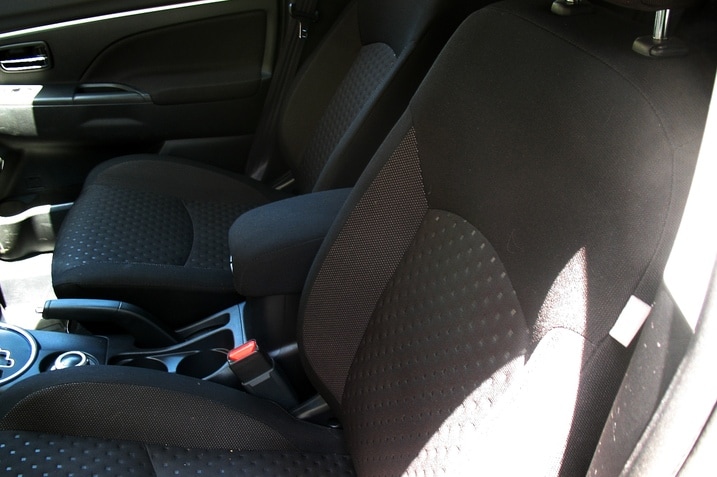
The seats in our Outlander Sport have three different types of fabric with three different textures. For some reason, when I look at the the nubby, blue-specked fabric that covers most of the seats, I think of these things...

Wonder if the designers went looking for inspiration in the men's sock rack?
The fabrics used on the seats are holding up pretty well, by the way. They're deflecting dirt like they're veteran politicos and doing a good job of keeping lint at bay, as well.
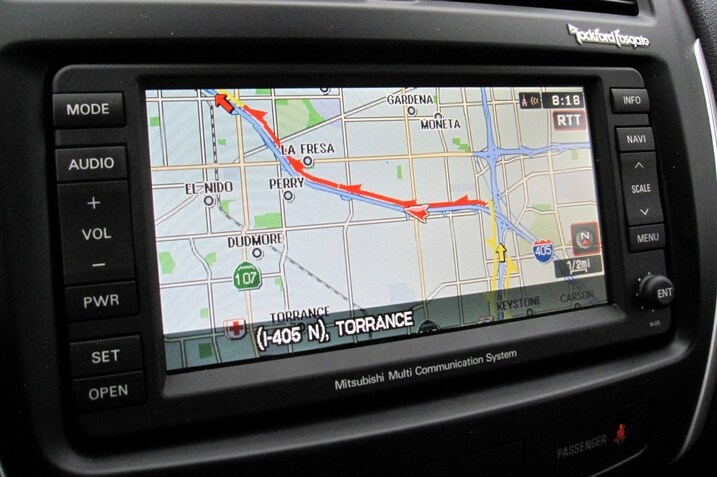
The Sirius subscription in our Outlander Sport hasn't been renewed yet (it will be soon), following the end of our free three-month trial. Without satellite radio, it feels like something's missing in the Sport. And this, of course, underlines the fact that a crossover like this is mostly about the music. It was designed to essentially be a boom box on four wheels. And I guess that's not necessarily a bad thing.
With no Sirius to distract me, I paid more attention to the Sport's performance — or lack thereof. Hit the gas and the crossover whines loudly as it takes its own sweet time getting up to speed. So yes, acceleration is still s-l-o-o-o-o-w.
Oh well. At least I can still amuse myself with the car's real-time traffic. No fee for that subscription; it's free on all Sports equipped with nav systems.

Last week we used the Mitsubishi Outlander Sport as a chase car to drop the Outlander GT off at the dealer for regular service. Now it's the Sport's turn.
The Mitsubishi flashes its request for service so quickly on the bottom of its center stack display screen, it's quite easy to miss.
Even harder to snap a photo of the warning.
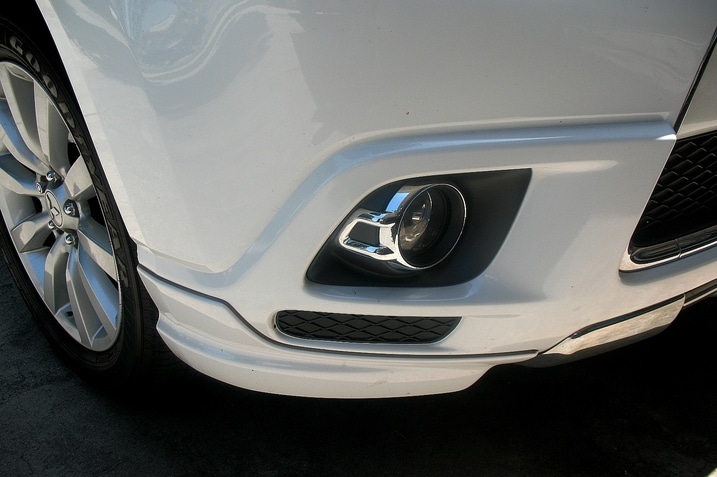
It's not like I'm some fog light fetishist or anything, but I found my attention drawn to the interesting pair on our Outlander Sport.
Fog lights are usually pretty mundane, but the Outlander's are dressed up with accents that make them look a bit dangerous, like they're peering out from the barrels of ornate guns.
The Outlander Sport is a car that owes its success more to things like its aggressive-looking sheet metal and cool sound system than anything else, so tricked-out fog lights make sense, I guess.
I can't think of any other cars that take a similarly fancy-pants approach in this area. Can you?

Our top 10 list of the most fuel-efficient SUVs and Crossovers for 2011 published today on Edmunds and the 2011 Nissan Juke came in at 3rd place with 27 city/32 highway/29 combined behind the Ford Escape Hybrid/Mercury Mariner Hybrid and Lexus RX 450h. See? How can anyone not like the Juke? Sure, its looks are an acquired taste but it's fun to drive, has decent fuel economy and did I already mention it's a blast to drive?
By the way, I asked my brother, new Juke owner, if he ever used the Sport mode when driving his Juke and he said no. He likes to stick to the Eco mode for the most part around the city. Understandable since gas is crazy expensive now and he's not a driving enthusiast anyway. I wonder if most Juke owners feel the same way?
Oh yeah, and the 2011 Mitsubishi Outlander Sport fell behind the Juke and Toyota Highlander in 5th place with 25 city/31 highway/27 combined.
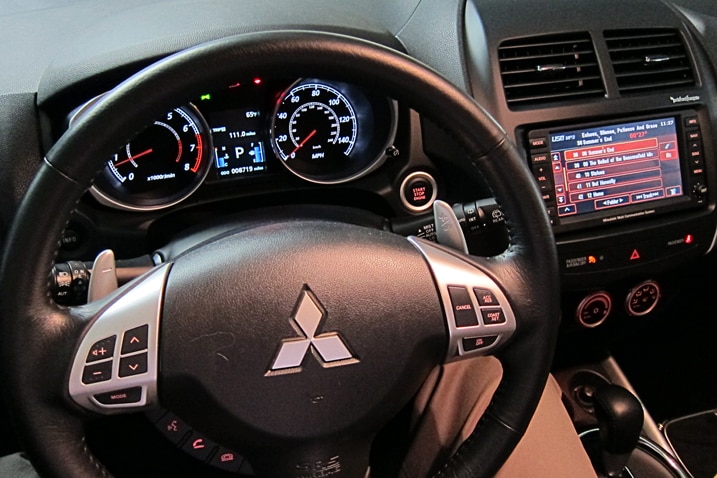
Each time I sit down behind the wheel of the Outlander Sport, I wonder why I don't like it more. The interior is unfussy, the seats are comfortable and adjust manually. The fabric is odd and, after all this time, still smells like Band-Aid. The controls and interfaces are simple and spread out. There's even AWD for the 16 snow days we're allotted out here.
Then I merge out into traffic, step into the gas, and wait. And wait some more, until the CVT gets its bearings and cuts an elliptical path from widest to seemingly tightest ratio. Then I remember why I don't like the Sport more.
But I've taken to a little workaround.
Just leave it in "D" and improvise in traffic with the paddles. You get some manual control of the CVT without the raspy oscillations you get if you leave it in the quasi sport-manual mode. It actually seems to do better if you let it find the first 10-15 mph on its own before taking over. And though the plastic paddles feel cheap, you can grab out a shift with a ring finger or pinky.
It's still an uninspired way to move, but keeps you somewhat active and makes the passage tolerable. Never having driven the manual, I can't compare the experience. But among those who have, the consensus appears that the 2.0-liter still labors inefficiently.
That said, an O-Sport with five-speed manual reached 60 mph in 8.8 seconds in our testing, same as our Acura TSX Wagon. Our CVT-equipped long-termer takes 10. Makes me hopeful that Mitsubishi is a powertrain evolution - or maybe a swap - away from a really decent little SUV. OK, maybe some better brakes. And more sway bar while you're at it.
Maybe Mitsubishi could simply swap in the 2.3-liter used in the JDM Outlander. It makes 167 hp and 166 lb-ft (an increase of 19 and 21, respectively). But even in Japan, that engine comes tethered to a CVT. Or they could simply give us 291 hp, 300 lb-ft, and slap a nice badge on it similar to one of its outgoing icons.

This Japanese small utility vehicle doesn't even recognize its own language. Case in point: some songs loaded to USB thumb drive from a new album by KODO, a Japanese traditional drum corps. The new album, Akatsuki, is full of folk melodies, straight-up bushido spirit and the infernal, thunderous drumming for which this crew is famous.
But the Mitsu multimedia center doesn't even recognize the Japanese characters in the song titles. It just stares quizzically like some two-dimensional electronic Riddler.
Could be a read error in the USB stick's file structure (the contents displayed on computer show up normally). Could be that the head unit - which I'm guessing is not supplied by Rockford Fosgate, but rather a Japanese or Korean OEM - doesn't recognize international characters. Could be that the drumming contained therein simply blew the infotainment system's mind. But the irony is staggering.
Carry on.

This photo somewhat exaggerates the effect, but I only noticed recently how big a chunk of visibility the Outlander Sport A-pillar area consumes. It's enough to make moderately tight right-hand turns a stretch-and-see effort, especially if any concrete pillars or posts are around. It's a combination of the wide, blocky mirror, the black sail panel housing the tweeter, the widening pillar base, and the thick A-pillar itself.
When I'm king, I'll make Mitsubishi use more vertical Wrangler-style mirrors, move the tweeter to the door panel and install a sail window, and make the A-pillar out of bulletproof, crushproof and suckproof Lexan. Or if I'm a king on a budget, maybe just adhere some surplus Aztek cladding to the quarter panels.
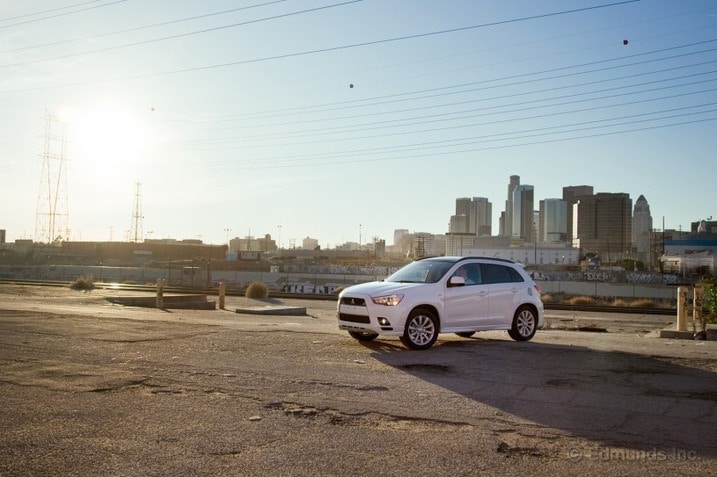
Friend of mine asked about a compact ute for his kid and said he was thinking about the Honda CR-V. I suggested the Mitsubishi Outlander Sport as well and said that maybe it gives you a little more for your money.
This is quite a comeback for a vehicle that we dissed so comprehensively when it first arrived. After nearly 10,000 miles, we’re actually liking the Outlander Sport.
Whether the Outlander Sport is really as good as a CR-V is a big subject, yet even to suggest that a Mitsubishi and Honda belong in the same sentence together is a pretty radical thought. It kind of tells me a couple of things.
First, Honda is still the standard of reference in so many categories — the vehicle that frames the discussion and begins any comparison.
But something has also happened to Honda that makes all of us think other vehicles might be more compelling choices. We talk about what it is, but we can’t quite pin it down.
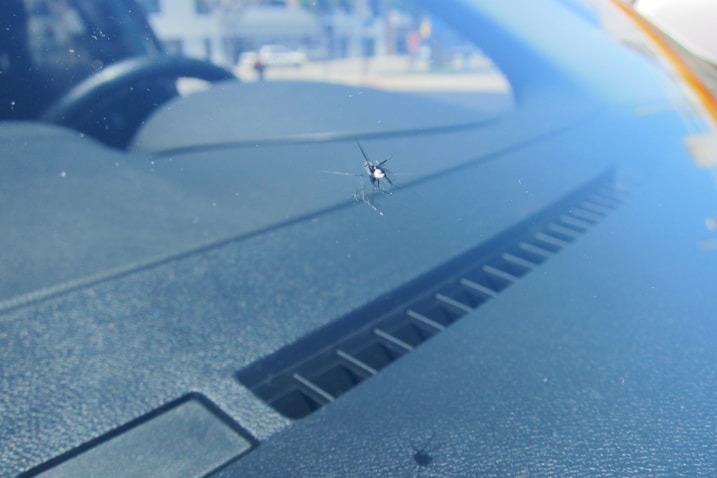
Nine thousand miles on the O-Sport odo and not a single maintenance problem to report. Well, there was the driver side A-pillar panel coming loose, but that only required a home remedy. So far, the Outlander Sport has been reliable, useful and slower than dial-up.
Ah, but now once this begins its stealthy takeover, it's gonna cost. Hopefully nowhere near as much as our M56 repair. Any wagers on how much?


Have you seen this one yet? Mitsubishi Motors have followed up their "Most Inane World Records in 24 Hours" ad with this more compelling "World's Most Dangerous Road" ad that they shot on Yungas Road in Bolivia.
This single-lane width road is also known as "Bolivia's Road of Death."
The dropoffs here (up to 2000 ft) make those in Malibu Canyon seem like street curbs.
One estimate is that 200 to 300 travellers are killed annually on this road. Gulp.
Hit the jump for the ad spot and the making of video.
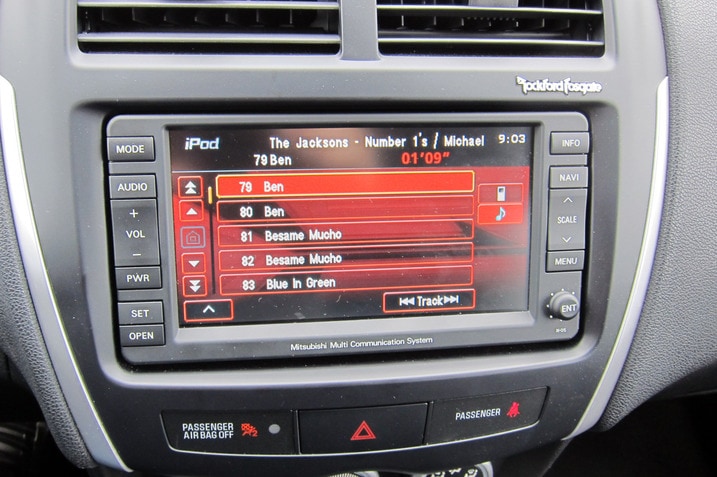
Sometimes, I put aside the show tunes and plug in the iPod Touch. Last night, I chose "Songs" then "Shuffle" then plugged in my iPod. The Outlander's audio system started playing all of my songs alphabetically. This seemed appealing so instead of fiddling with it, I let it play. You get a very interesting mix of music when you start with songs that begin with the letter A. And boy, do I have a lot of As.
When I got home about an hour later, I was still in the early stages of B. It was playing "Ben" by Michael Jackson, of which I have two versions. (It's not repeating in the picture.) I unplugged my iPod. Later than night, I was listening to a specific album on my iPod and had it hooked up to my speakers in the house.
Next morning, I connected my iPod to the Outlander and again chose "Songs" and "Shuffle." I expected it to start over and I was going to choose a different letter. I'm digging the whole alphabetical thing. It continued where it left off the night before, right in the middle of the Bs, and it was kind enough to start "Ben" over again. It remembered where I had left off even though I had used my iPod differently in between.
Also interesting, is the Outlander's audio system alphabetizes differently than my iPod. It skips songs that begin with articles such as "The" so "The Beautiful Strangers" and "The Best of Times" were skipped.
I'm not complaining, just making observations.
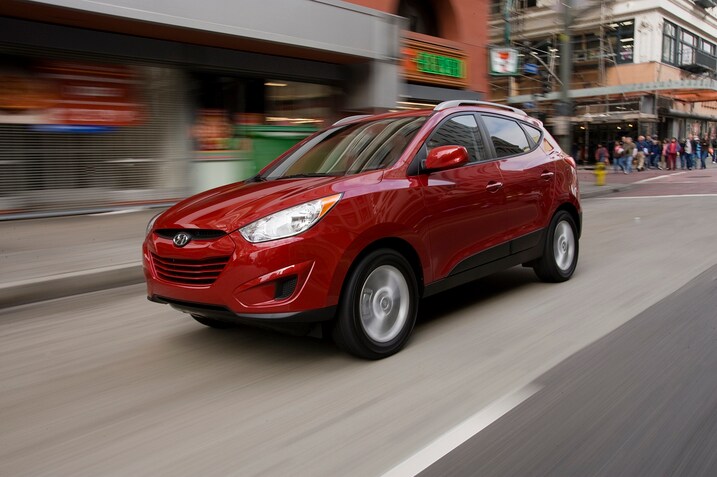
We have a 2011 Hyundai Tuscon in our garage for a few days for testing. Beneath the skin, the Mitsubishi Outlander Sport is the same. Same size, same platform, same engine and transmission, same interior architecture and space. There are plenty of mechanical differences, of course, but the way the equation comes together is so similar that I can't see any distinction between them.
There’s not much you can do to style vehicles that are so short and tall, and both the Outlander Sport and the Tuscon show evidence of what happens when the designers try too hard. The Hyundai guys have applied their current design themes as best they can, but the result looks as if a potato had been attacked with a paring knife. I’ll take the Walter da’Silva-autograph, overstated full-frame grille on the Mitsubishi.
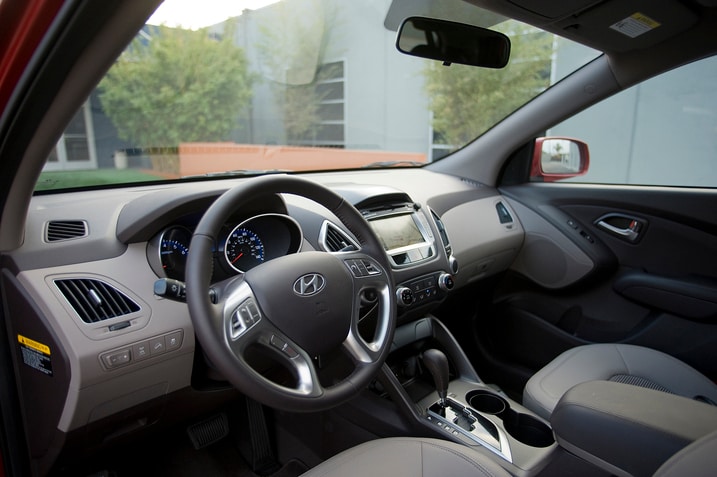
The Tuscon is pretty zippy within the cabin with the usual Hyundai interior flourishes plus some surprisingly well-chosen two-tone colors. But while I hate to go all boring, I still prefer the motorsport-style black of the Outlander Sport. At the same time, the Mitsubishi’s silly shift paddles on the steering wheel simply serve to obscure the stalks used to operate the lights and the windshield wipers, as you can tell after driving the Tuscon.
More important is the difference in dynamics here. Whatever clumsiness our editorial staff finds in the Outlander Sport, this Mitsubishi seems like a Dakar rally-raid special compared to the Tuscon. The Hyundai stumbles along on its suspension springs as if the dampers have been installed purely for show, while the drivetrain surging produced by the throttle tip-in and the lax CVT engagement make you feel like a very bad taxi driver. And the onset of concern from the Hyundai’s safety net of dynamic control electronics comes so soon that it actually annoys you.
Overall, the Tuscon feels like it has been tuned by a quick drive around the parking lot, while the Outlander Sport is a wonder of mature refinement in comparison.
These vehicles should be identical aside from the way they look, yet they prove surprisingly distinct when you drive them. Apparently, careful tuning (or the lack of it) is surprisingly important and development still matters.
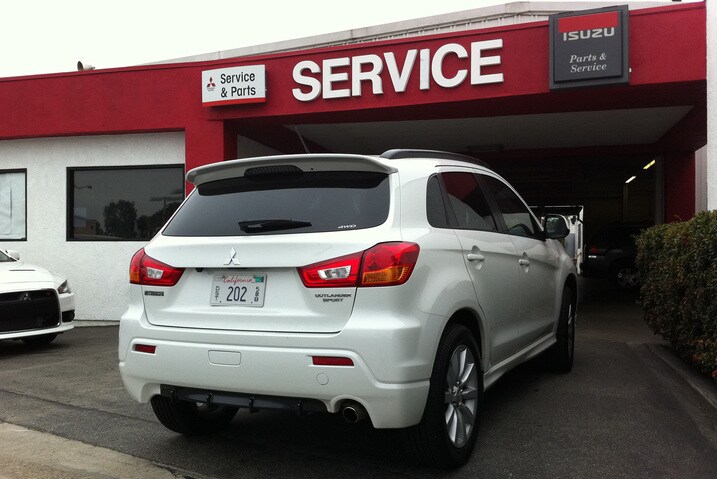
Our Outlander Sport was due for regularly scheduled maintenance so we took it to Long Beach Mitsubishi Isuzu. It wasn't exactly busy there so the service advisor wrote us up almost immediately for an oil and filter change and a tire rotation. He didn't even try to upsell any extra services. We opted not to wait and returned some time later to pick it up.
When I got back to the dealership is was ready to roll. The bill was $89.63 since it takes synthetic oil at $4.35/quart. Instead of pulling the car up, like they do at most dealerships, the cashier lady handed me the key and said, "It's parked out front somewhere." I located the Outlander by clicking the remote. When I got inside there was something I didn't like. Between now and when you hit the jump can you guess what it is?
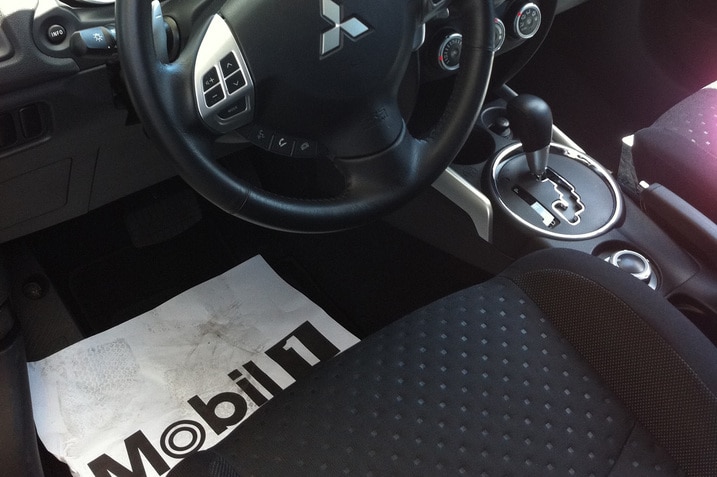
They left the promo paper floor mat in the car with a big fat ad across it. Not only that but the paper tag was still dangling from the rearview mirror. Not a big deal. But then I had to strip them out and find a place to throw them away. Am I being too uptight?

Our Mitsubishi Outlander Sport hit the big 10k over the July 4th weekend.
So far, after almost 8 months of ownership we've had it in for service only once - for the scheduled 7500 mile service - which cost us a whopping $ 89.63. The chipped windshield will add to that - we'll see how much though.
Over 10,000 miles our average MPG over that time has been 23.7, which is still off from the EPA's 26 MPG Combined rating.
Since the Mitsu's a tad short on miles, I envision many long road trips during late summer and into the fall. Maybe that will bring our average MPG up.

Our 2011 Mitsubishi Outlander Sport pulled airport duty while I spent two days in Berlin. It sat patiently on the rooftop level at Wally Park, a name that for some reason makes a certain Canadian friend of mine crack up every time I say it.
One large international bag from Costco and one backpack equals one last thing to do before I climb in and drive home.

With the seats up, the big checked bag simply won't fit lengthwise. But it slips in just fine sideways, with room for another just like it if I had one.
We have actual test luggage at our static test lab, consisting of large international checked bags like this one as well as the ever popular carry-on roller bags, the ones that just barely fit into the overhead compartment.
Our loading standard for measurement prohibits stacking anything higher than the rear seatbacks or otherwise impeding rear visibility. To that end our Outlander Sport will also carry one large and two carry-ons or, if we leave the large checked bags at home, five carry-on bags.

The Outlander Sport may come up short on power, but one thing you can't gripe about is the look of its cabin. Said cabin looks even better after dark, I think.
Another shot follows after the jump.
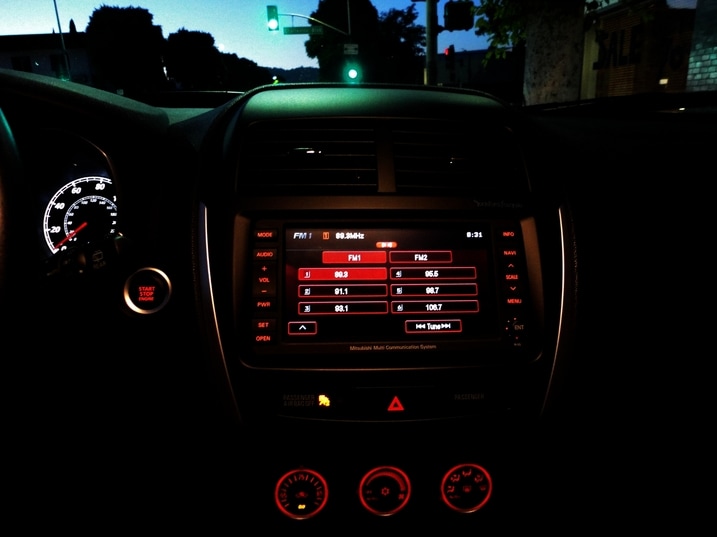
Red illumination can sometimes feel a bit garish to me and strain my eyes, but for whatever reason, I like the way it looks here. The use of this color helps the cabin look just as assertive and masculine at night as it does in the daytime.
What do you think?

We've all griped about the Outlander Sport's flat-footed nature when left to its own transmission devices. And as noted (and useful when dealing with L.A.'s legions of unpredictable and inattentive zombies) working the CVT manually puts some spring in this Outlander's step. Once you've got that down (or just don't care and leave it in D) you'll likely notice and appreciate this Mitsu's trio of upscale features:
Keyless entry/ignition: Until fairly recently, this was just something you'd see in premium brand luxury cars. Simply touching and then pulling the door handle rather than fishing and/or fumbling with a remote is handy, especially when you're running errands.
Xenon headlights: Another high-end feature that, like the above, is standard on the SE. We've all been on streets that seem to be illuminated with candles, so obviously having powerful headlights with a broad, sharply focused light spray make for a less stressful and more confident night time drive.
Back-up camera: Yes, we all know how to parallel park here. But let's be honest, a back-up camera makes it much easier to fine-tune your car's position on crowded city streets and strip malls (where the spaces here in L.A. are often sub-standard in size.)

I spent three days in our 2011 Mitsubishi Outlander Sport SE and I wish I could be more enthusiastic about it. I drove to San Diego and liked the way it handled at highway speeds and the interior is attractive if you don't look to closely. It's also a good size for tight parking spaces and still has a roomy interior. But the navigation system is difficult to program and my cell phone had to be connected each time I got in the car. After driving 316 miles we got 25.3 mpg which is pretty good for a tall SUV.
I don't mind the lack of power as much as the feeling you get from the power delivery. You step on the gas, the engine buzzes and then it sort of accelerates. The problem is that the 2.0 L, 148-hp engine feels disconnected from the transmission. Years ago I owned a 2000 Mitsubishi Galant and, while it wasn't fast, it had good low-end torque. Around town it felt lively and responsive. An auto engineer once said something to me that has really stuck with me: "People buy horsepower but they drive torque." Unfortunately, the Outlander is short on both.

I just returned from road-tripping our 2011 Mitsubishi Outlander Sport. No, it was nothing like Phil's rock-crawling adventure in the Juke. Instead, my trip was exclusively paved. Nearly all freeway for 1000 miles, give or take, from Los Angeles to Thunderhill Raceway in lovely Willows, CA, and back.
Beyond the jump are a few things that stood out, both good and bad.
The Good:
Its seats are pretty danged comfy for such a long trip. Not until I was about 850 miles in did my left cheek start to complain, and that's partly since I'd driven in an endurance race halfway through this trip. That's pretty impressive.
Though not remotely sporty, the Sport steers and rides like a real car. That is, this is in no way simply a slightly larger Smart.
Its electric power steering (EPS) feels more natural than those of many manufacturers. It's surprisingly similar to Mitsubishi's hydraulic systems. The helm does, however, exhibit that annoying need for constant correction around center, like many EPS systems that place the motor in the steering shaft rather than the rack.
The Bad:
For some reason the Outlander wouldn't connect to any music stored on my iphone, the streaming Bluetooth didn't work, and XM channels were stuck in a continuous "updating channels" limbo. Thus, tunes were limited to the radio or the Outlander's hard drive, which had just James Brown (sweet) and an audiobook of the Da Vinci Code (not sweet). And let it be said that there's nothing on the radio in the middle of the California desert unless you count Christian preachers or mariachi, which I don't.
The worst of this car is that damned CVT. Just terrible. There's a way to do CVTs right (see Nissan) but this one always leaves the engine struggling. No confidence to accelerate around anything, ever. And the drone of the engine when you wood it (which is a lot, since it's got no sauce) is awful.
Fuel economy for this trip — mainly 80 mph cruise, along with aforementioned woodings and about 5% city traffic — rang up to 23.2 mpg. Yipes. Didn't even reach this car's EPA city number of 24 mpg.
Overall, it's the CVT that wrecks it for the Outlander as a road trip car. Were it not for that — and the unimpressive fuel economy — I'd judge it as 'better than expected.' Then again, my expectations were not high.

This weekend my 7-year-old pit mix Mya traveled with us to Willows for the 24 Hours of Lemons race in Thunderhill. We had to decide between the Nissan Juke and the 2011 Mitsubishi Outlander Sport SE but went with the latter for its larger cargo area. (Considering the Bad in JayKav's post, I kinda wished that we just went with the Nissan.) In any case, here are some observations with regard to doggy travel:
— In our Outlander Sport there aren't any rear vents but we could aim the vents on the dash straight back toward the backseat and it kept her cool, especially important during the muggy 95-degree weather up in NorCal.
— There's a handy pocket just behind the driver seat that's perfect for storing her leash for easy access. No such pocket behind the front passenger seat, so we kept her on the driver side.
— Even after a run through the car wash, her fur was still stuck to the cloth on the backseat. This will require something stronger than a vacuum cleaner to remove, maybe sticky tape.
— Mya didn't seem as comfortable as she was in the Acura TSX Sport Wagon in that during the road trip — even though we did pit stops for her so she could stretch her legs and take bathroom breaks — she would still fidget, sigh, whine and sit straight up, looking at me with those "Are we there yet?" eyes. I'm thinking she didn't like the loud RAWRR of the Outlander Sport's CVT whenever JayKav clicked the paddles for a downshift since she always woke up when that happened. But that's my interpretation...you know, since Mya can't talk.

I'll be honest, I'm not a fan of the Mitsubishi Outlander Sport. Not with that engine and transmission I'm not. Seriously, I'm quite confident that my 16-year-old blender would be more successful at propelling this thing. But that's not the point I'm making here. Instead, here's something I like about this little utility vehicle
Look at that panoramic sunroof and more specifically its sunroof shade. Most jumbo sunroofs come with a sliding shade that utilizes thin vinyl or headliner-like materials of varying thickness. Oh, and then there's the useless meshy stuff that gives you more sun than shade.
The Outlander Sport, on the other hand, features three rigid panels that slide back and stack on top of each other. The result is no sun coming through, reduced noise and no flapping in the breeze should you lower the windows. You also gets some snazzy yellow LED accent lighting as well. If only the powertrain were as well executed.
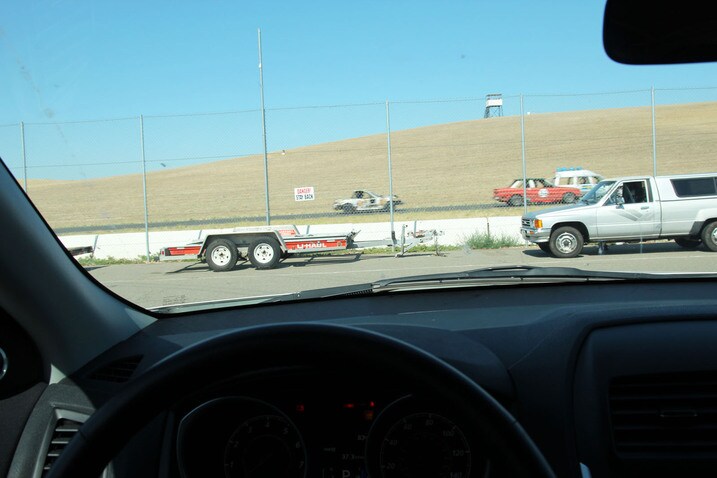
Last weekend we had the 2011 Mitsubishi Outlander Sport SE for our road-trip car to the 24 Hours of Lemons race up at Thunderhill Raceway near Chico. (That's our blurry Lemon Miata in the center as viewed from the Outlander in the paddock.)
Past long-termers have been functional enough to serve as dressing room, punchline and race mule. But our Outlander was barely large enough to lug our race gear and weekend luggage as well as dog paraphernalia and dog. And when fetching additional race gas, we even had to resort to using a Subaru Brat for obvious reasons.
Of course, being a not-so-great Lemons transport can be said for a lot of our current long-termers but if our Outlander even had been fun to drive, had decent fuel economy or equipped with working Bluetooth, satellite radio and iPhone connector, that would have redeemed it a bit. As it was, bleh.
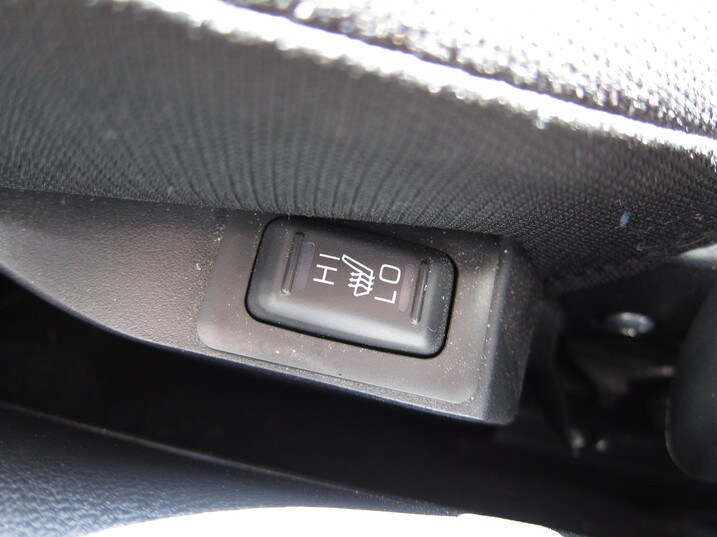
The Outlander's seat heater switches are on the inside of both front seats tucked out of the way below the bolster. There is no industry standard for where to locate these switches so I sometimes hunt around for a minute before finding them.
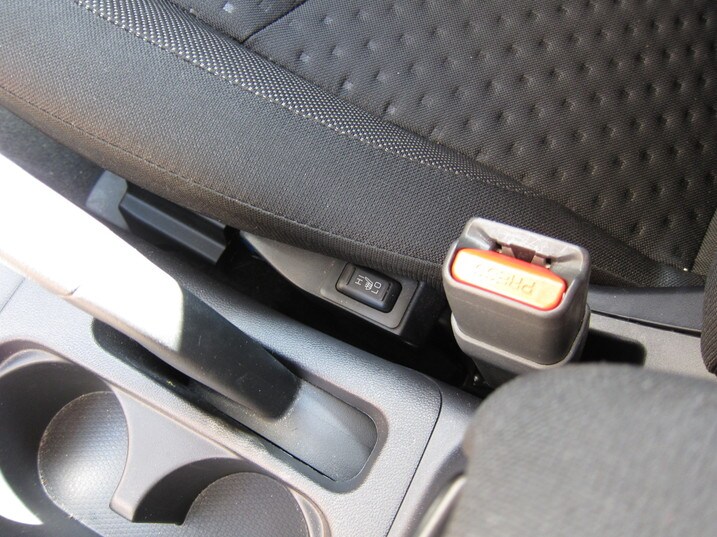
This shot shows more clearly how "tucked out of the way" the switches actually are. Here's the thing: I might sometimes hunt for these switches, but it does make sense to have them on the seats. After all, I look for window switches on the doors, right next to the window.
Not a big deal after you've located them, but for whatever reason I always look for them on the console. Hey, at least they're not hiding completely out of sight like the switches on our GT-R.
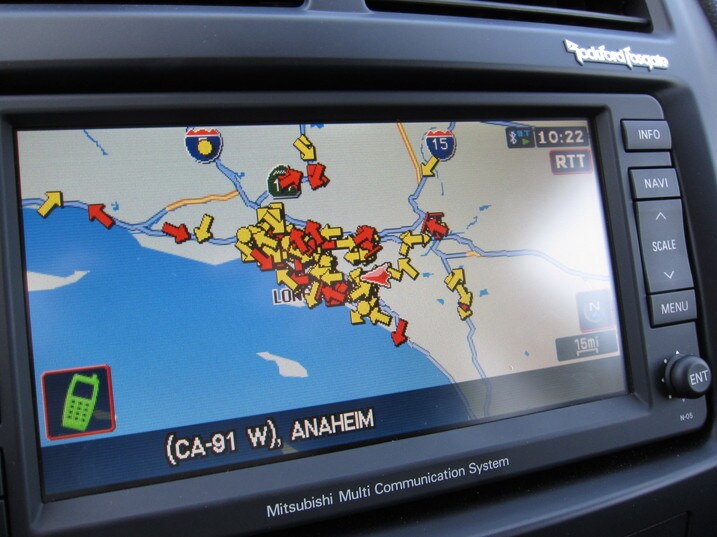
There's a reaon why I prefer navigation traffic systems which simply color code the road rather than using arrows to display congested areas.
This is it.
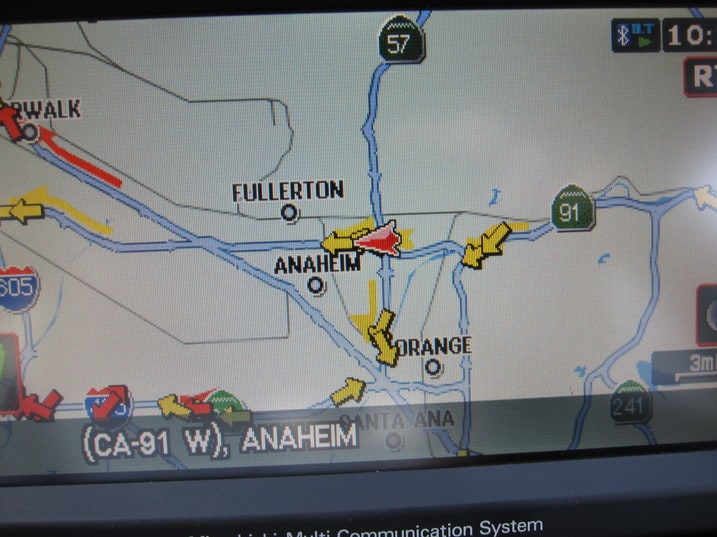
Sure, it gets better when the scale changes. Zooming in will get you some useful information.
But, zoomed out, it's as funny as it is worthless. At least in LA.
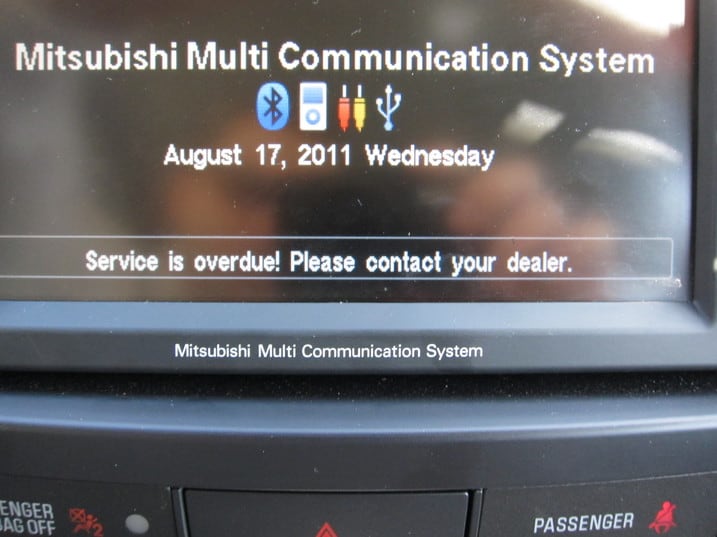
After a few days of driving the Outlander Sport I saw this service notice on the nav screen upon starting the car. Not sure if it's been appearing for a while as it disappears after a few seconds.
Not only that, but we just had it serviced at the end of June. An oil change already, perhaps? Seems awfully soon. We'll check it out.

The Outlander Sport doesn't look too bad from this angle, at least compared to our Nissan Juke.
That's because the Outlander gives up 21.7 cubic feet of cargo capacity. That's less than rivals like the Kia Sportage, but more than the Juke's paltry 10.5 cubic feet. So the Juke may be loads more fun to drive but at least the Mitsu can claim victory in one area.
The Outlander Sport's cargo area also features some close-to-the-floor local illumination, which can help give you the lay of the land back there after dark.
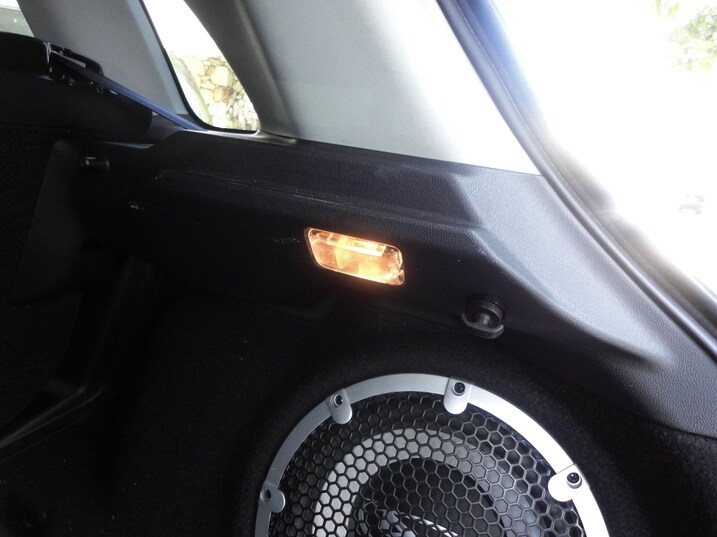
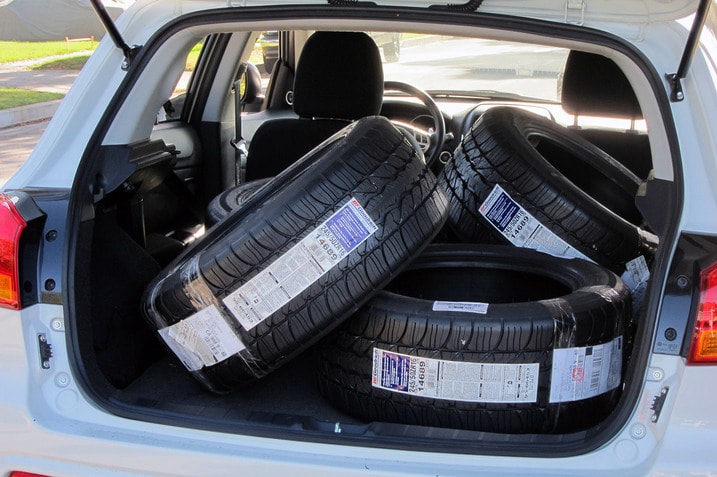
My old Firebird is getting new rubber. But four new bolognas don't fit in my Firebird, so this morning I used the Outlander to get the new BFGs to the installation point.
Folding the Outlander's rear seat is a study in easy. And it folded flat. Nice.
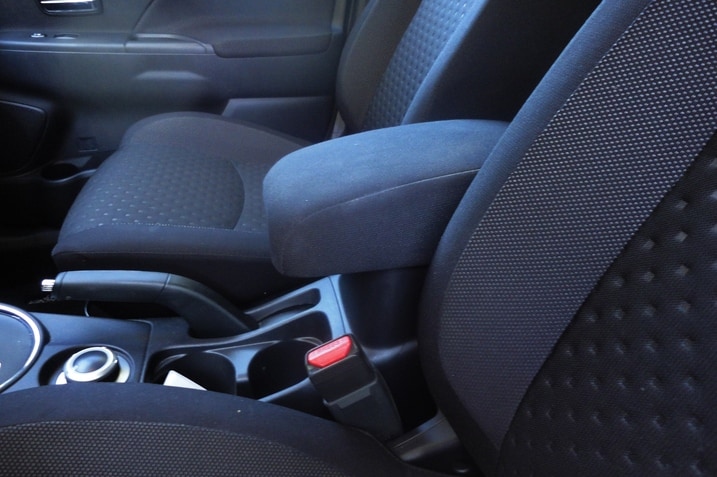
The center arm rest in our Outlander Sport slides fore and aft and it extends by a relatively significant amount — it sticks out far enough to allow me to rest my elbow even while my hand is still on the steering wheel. This comes in handy during mellow stretches of freeway travel and helps make the cabin an even more comfortable place to be.
Now if only the arm rest had a bit more padding it would be perfect. Banged my elbow on it a couple of times. Ouch.

Our long-term 2011 Mitsubishi Outlander Sport SE has some peculiar roof rails. They're completely solid with no gap to the roof's sheet metal. From the top pic it appears like the gap of a standard roof rail were simply fillled in.
Hit the jump and you'll see in that pic there are mounting points for trusses across the rails, similar to conventional roof rails (2008 Lexus GX on the jump, for comparison).
I've never seen roof rails like this. Then again, I've never used a vehicle's roof rails. Ever.
I make sure of all of my crap goes inside the load area. So my experience is limited to mounting the trusses on our long-term Sienna.
What about you? What gear/crap do you carry on the roof of your vehicle?

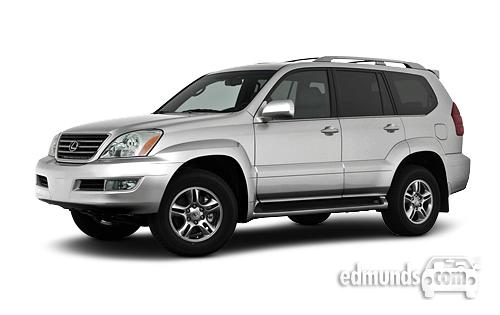

First the good news. Our long-term 2011 Mitsubishi Outlander Sport SE is great for around town. Running errands, short trips, and going out: it's good for all that due its manageable size, decent handling, and good utility. The Outlander Sport has a good-sized storage area, is easy to park, and you can squirt around traffic — if you use the paddles. And I think it looks great too.
However, I wouldn't want to take it on long trips or a road trip. The suspension is OK, but the ride is a bit choppy, due in part at least, to the short wheelbase. And the engine is anemic and emits a droning noise. Sure those nice magnesium paddles keep the revs up and make things somewhat interesting. But I wouldn't want to climb the I-15 grades to Vegas in this thing. You would get squashed by the big rigs.
How about your ride? Is it better around town or on the open road?
Audio Packaging
The 2011 Mitsubishi Outlander Sport SE has a Rockford Fosgate system that's identical spec-wise to the system that was in our former long-term 2010 Mitsubishi Outlander GT: nine speakers (including a 10-inch subwoofer) powered by 710 watts. The two systems should also sound the same (hence no audio review on the Sport SE) but they look very different.
The tweeter pictured above is from the Outlander Sport SE, and it's pretty generic compared to the silver-highlighted tweeter in the Rockford system in the Outlander GT.
I've always liked the bold, aftermarket-like packaging of the RF tweeters in the GT. Same with the 10-inch subwoofer. The subwoofer in the Sport SE (below left) is certainly more bad-ass than bland compared to most other OEM subs. But the same 10 in the GT (below right) has a bit more style.
The GT stickered at $33,030, but the Rockford system was standard, whereas the Sport SE cost $28,810 and you have to pay $1,800 for the Premium Package option to get the same system.
Does such audio packaging appeal to you, even if the sound is the same? And is the extra styling worth the extra dough?

This is what the screen in our 2011 Mitsubishi Outlander Sport becomes when the satellite radio expires. It is a useless, frozen readout that makes life extremely difficult were you interested in renewing the subscription. We figured it out eventually, but it wasn't easy...
In order to activate Sirius radio the rule is "tune to channel 184" and give the radio a few minutes to populate each station. That is not possible in the Outlander being that the channel controls stop working the moment your plan expires. We purchased a renewal plan and sent out the signal online just like we've done a thousand times before. But it didn't work this time.
We had to call Sirius, wait 20 minutes on hold, then identify ourselves via 50 different personal criteria before our conversation with a real person began. The operator was patient and courteous (we have to give them credit) while she ran through the troubleshooting list with us. A combination of turning off the car and restarting it ultimately solved the issue. Now we are up and running with all channels.

Other styles of radio allow you to access channel 1 (for XM) and 184 (for Sirius) even when the subscription is expired. The Mitsubishi didn't allow this, and instead left us with a waste of time. It wasn't the end of the world. But it shouldn't have to be this difficult.

See that red fasten seatbelt light on the dash of our 2011 Mitsubishi Outlander Sport? It is driving me nuts. Actually, the light itself I can live with. The associated chime is the problem...
Now don't get me wrong, I understand the importance of the chime. And I can promise you that if the car is moving, my seatbelt is always buckled. But why does this chime persist when I'm parked? Can't I just sit here, listen to the radio and choke down this egg McMuffin in peace while I wait for the auto parts store to open? Not unless my seatbelt is on. Frustrating.
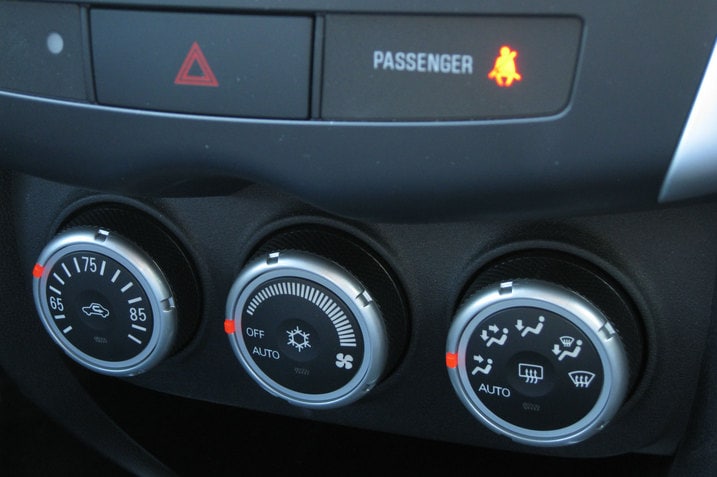
The passenger warning isn't perfect either. It will activate with just the weight of my backpack on the seat. But I can forgive that because there is no chime accompanying it. The light will flash for hours on end if I let it. I really wish the driver's warning was the same.
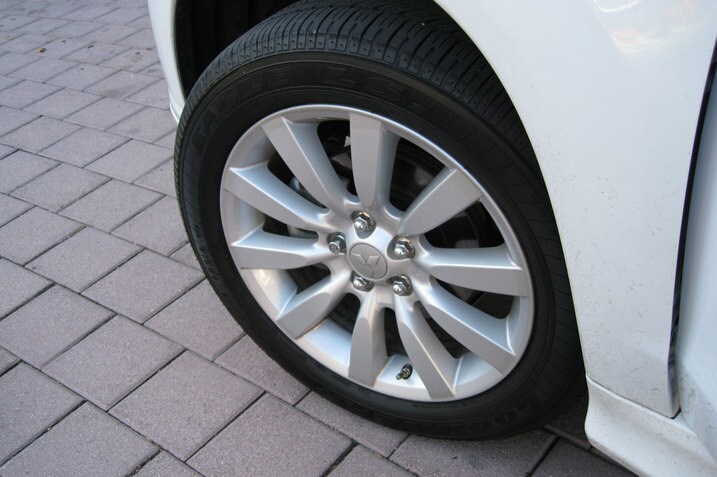
There tends to be a lot of road noise echoing around the cabin of our 2011 Mitsubishi Outlander Sport. Most of it is caused by these Goodyear Eagle LS2s. At speed, and most noticeably on the freeway, the tires emit a steady drone for all passengers to enjoy. Bumps and changes in road texture don't affect the pitch much, which maintains a persistent howl. I keep the radio volume up as a countermeasure.
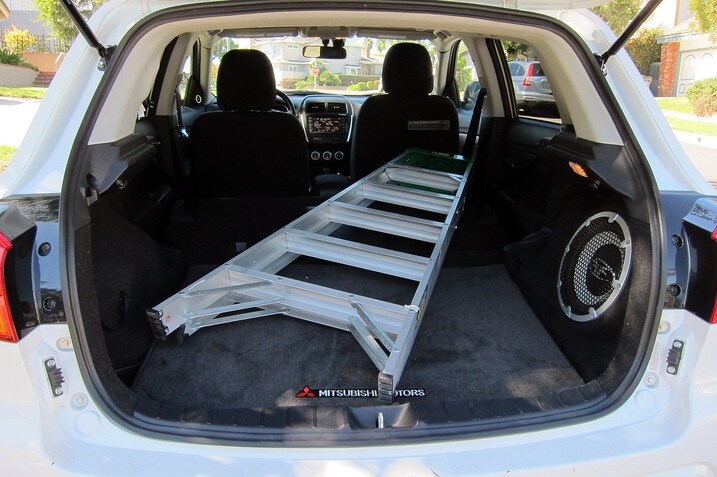
This weekend I managed to fit my 6 foot ladder in our long-term Mitsubishi Outlander Sport. Honestly, I didn't think it would fit, but it did once I pushed the passenger seat as far forward as possible.
Nice surprise.

I've spent a lot of time in our 2011 Mitsubishi Outlander Sport recently. In my single days the positives of this SUV outweigh the negatives easily. This is a car that I would consider spending my own money on if not for one thing. I'm not single anymore...
The positives:
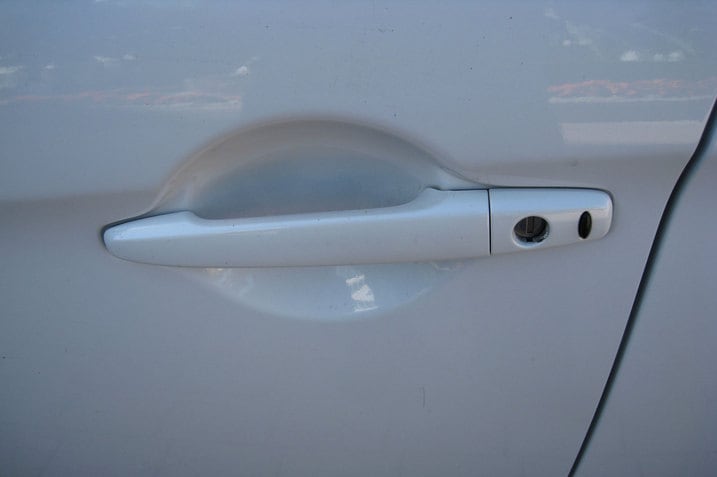
The keyless entry system is perfect for my taste. Press the button to unlock and again to lock. Simple. There aren't any fancy sensors to detect hand movement or ridges that I have to slide my thumb across to gain access to the car. It works the same every time. I like it.

The 60/40 folding rear seats are great. I had to install some baseboards in a small bathroom last weekend. Fortunately, none of the lengths were more than 6 ft, so I got away with lowering the 40 and sliding the baseboards (not pictured, obviously) right in. The utility is attributed more to it being an SUV than an Outlander specifically, but it still gets the job done.
There are more good things to say. The seats are comfortable. The steering wheel is weighted well considering its electric nature. The ride is compliant despite its short wheelbase. And the Sport has plenty of power for life around town and on local freeways.
Not everything is great. The ride is agreeable but those tires are loud. The Sport does little to keep tire and road noise outside the cabin. Keep the radio loud and you might be ok. I said the Sport had plenty of power for local errands. Well, it does from a start. But where the CVT-little engine combination lacks is during any midrange throttle request. Need to pass somebody? Good luck. And when the CVT is hard at work it surpasses the road noise already bouncing around the cockpit. Fuel economy is adversely affected by this routine as well. It turns out that heavy on the gas isn't very efficient.
If you can come to terms with the negatives above, which I easily could in my single days, then this is an SUV worth consideration. Problem is, I'm not single anymore. And my perception of its family friendliness is ultimately the dealbreaker for me now. I can strap the kid into the car seat just fine. Tight and secure. But when I close the backseat door and its tin-can thud reaches my ears, I'm out. Not even if a government safety test tells me me this SUV ranks among the safest on the road, I can't get over the audible appeal of a solidly closing door. Maybe I'm narrow minded in this respect. I won't hide it. Still, I'm going with my gut on this one.
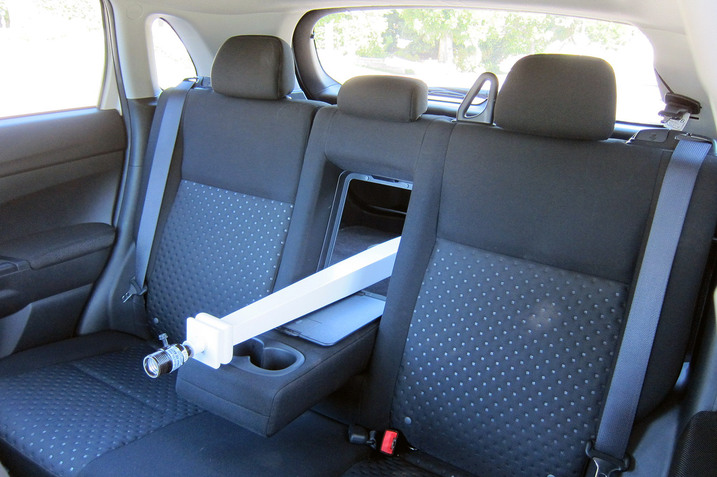
I'm not sure, but I may be the first to use the Outlander Sport's pass through. Glad it was there. Usually the 60/40 split fold down rear seat gets the job done, but this time I wanted to take this old floor lamp and my family over to a friend's house to watch some ALCS.
Don't laugh. The guy won the lamp fair and square, and I always pay my debts. Although, I have decided to lay off the poker for a while.

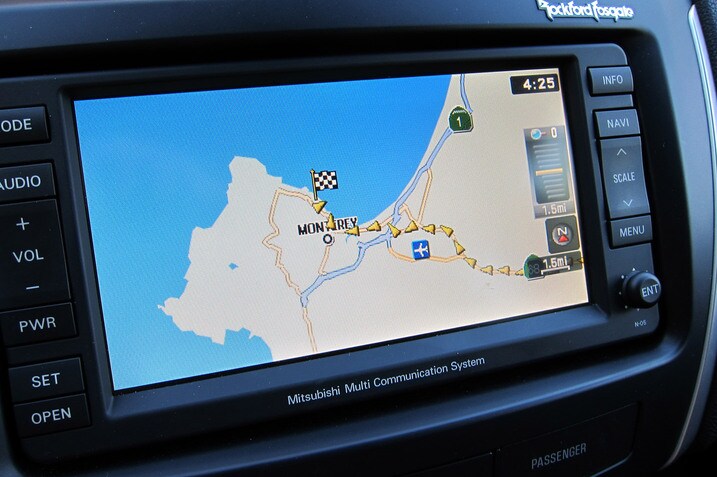
Today three of our long-term cars will be driven from Santa Monica 325 miles north to Monterey, CA for the Porsche Rennsport Reunion. Kurt Neibuhr will drive our 1985 911 (duh!), Michael Jordan will pilot our new long-term Audi A8, which arrived yesterday, and I'll be in our Mitsubishi Outlander Sport.
Why did I choose the Mitsu?
Simple, I like it. It has everything my dad and I need for a successful road trip, including a nice ride, comfy seats, strong air con, sat nav, sat radio and plenty of room for two big strong Oldham men and our luggage.
It also gets good mileage. 29 mpg on the highway according to the EPA.
I can't wait to get on the road. Check back here early next week for an update on the Mitsu and our road trip.

We've passed the 15,000-mile mark on our Mitsubishi Outlander Sport.
Our goal is usually 20,000 miles in one year. Our one-year anniversary with the Outlander Sport is at the end of November. So, we have about 5 weeks left to put 5,000 miles this SUV. That's 1,000 miles per week.
Do you think we can do it?

Since last Wednesday I've driven our long-term 2011 Mitsubishi Outlander Sport nearly 1000 miles, including a a 650 mile all-California road trip from Santa Monica to Monterey and back.
Verdict?
I'm still a fan of this little crossover. It was quiet enough out on the highway, its seats were comfortable, its sat nav, sat radio and air conditioning kept my dad and I happy, and it had plenty of range. It was also very easy to park.
The only disappointment was the Mitsu's fuel economy. On the way up we averaged 25 mpg. On the way home I pushed a bit harder and we averaged just 22.7. EPA rates the Outlander Sport at 29 mpg hwy.
Then again, nobody ever accussed me of being a hypermiler.

Last week I posted about taking my kids to the beach in our long-term 2011 Mitsubishi Outlander Sport. I failed to mention that we also stopped at the 9/11 Memorial at the Manhattan Beach fire house. If you're in the area you should check it out. Those two rusted steel posts are actually girders from the World Trade Center.
It's one of those places where you whisper out of respect.
As the memorial reads, we shall never forget.

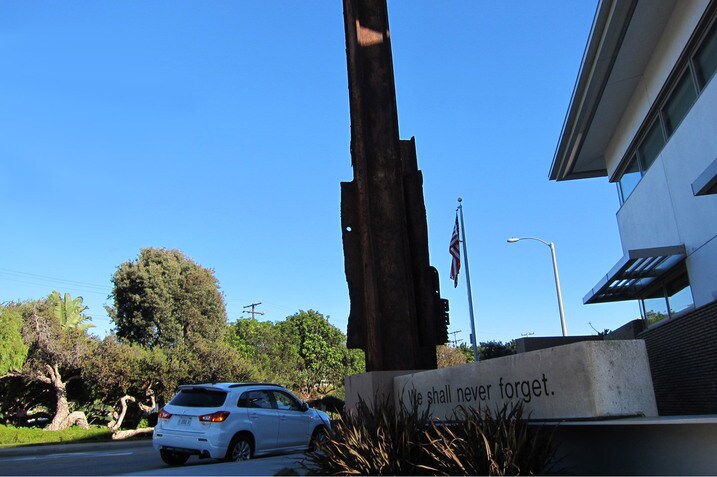
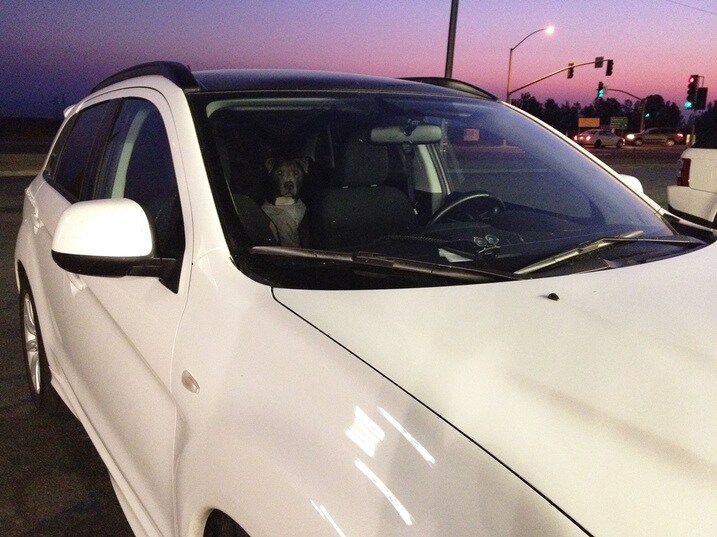
Yes, ended up taking our 2011 Mitsubishi Outlander Sport SE for the road trip to 24 Hours of Lemons at Infineon Raceway this weekend, and not the Ford Explorer. And even though I already did a Dog Report on the Mitsu, I discovered a couple more things I wasn't crazy about. But first, I love the above photo of Mya in the car. Would you try and steal this car? Heh.
OK, well, once again, the issue about there not being any rear-seat vents came up during the 80-plus-degree days in Northern California. Since the only air Mya could get in the backseat was from the vents on the dash, we had the fan blowing high and the A/C making things colllld up front but comfortable in the back. I turned on my seat heater (naturally) and threw on a jacket to make it bearable.
Also, there aren't any overhead lights, or any lights, in the back so buckling Mya's harness in was slow going. Fortunately for me my dog has this uncanny knack of sitting right on the seatbelt fastener EVERY time we put her in the back. So I just try and push her stubborn 65-pound butt out of the way and click her in. But I'm sure not every dog has that seatbelt fastener-finding ability so no lights in the back could be an issue to those Outlander owners who have dogs.

I'm into roadside distractions. The wierder the better. I once drove four hours out of the way to visit Billy the Kid's grave.
This one isn't quite that dramatic, but a couple of weeks ago on Highway 1 in North Monterey, CA my dad and I stumbled upon J&S's Eagle Iron and Leather Shop and its enormous handcrafted motorcycles.
The rusted one with the red wheels is powered by a Ford V6 and looks like it may have been rideable once. The one covered in license plates was also V6 powered, but it was hard to see if the engine is also a Ford or something else. Both are chain driven.
Glad we stopped. Check it out if you're ever in the area.

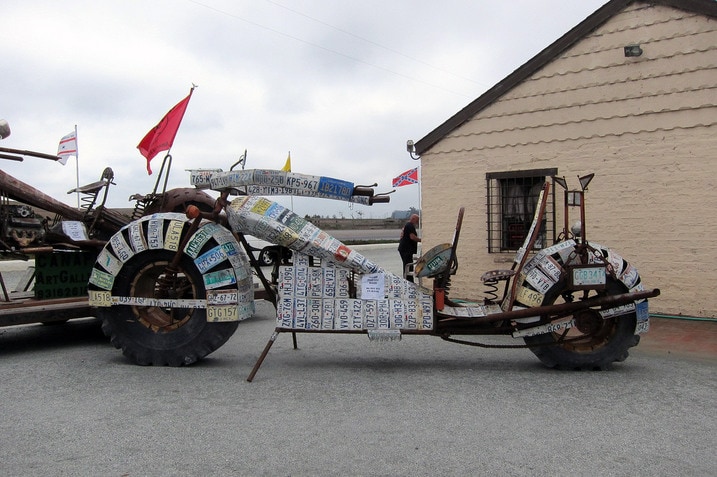
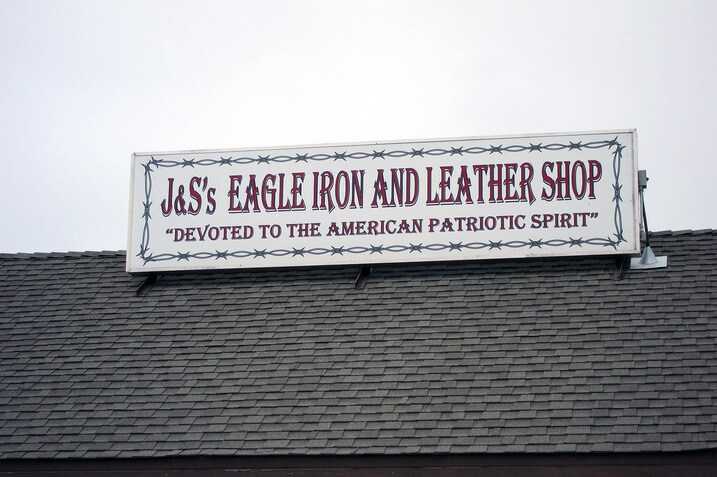

This is the message I get when I try to connect my iPhone via Bluetooth to our 2011 Mitsubishi Outlander Sport. OK, no biggie. I see that a lot. Not many cars allow the driver or, in this case, the passenger to program Bluetooth or a destination via nav while the car is in motion. But...
Then why is it a destination can be programmed into the nav while the Outlander is moving? Does Mitsubishi feel that punching in the 4-digit code, etc. is more distracting than punching in a house number, city and state?
Yay for if you're lost and don't want to pull over to plug in your destination. Beww if you want to listen to your tunes via Bluetooth Audio or call ahead to tell your friends that you're lost.
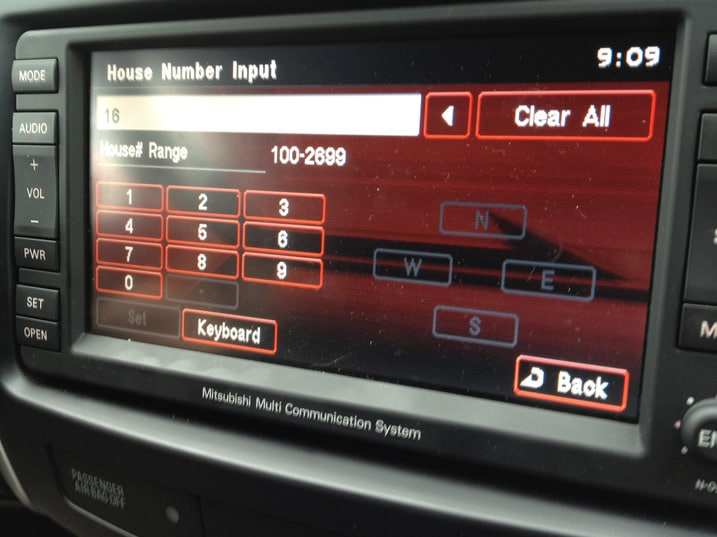
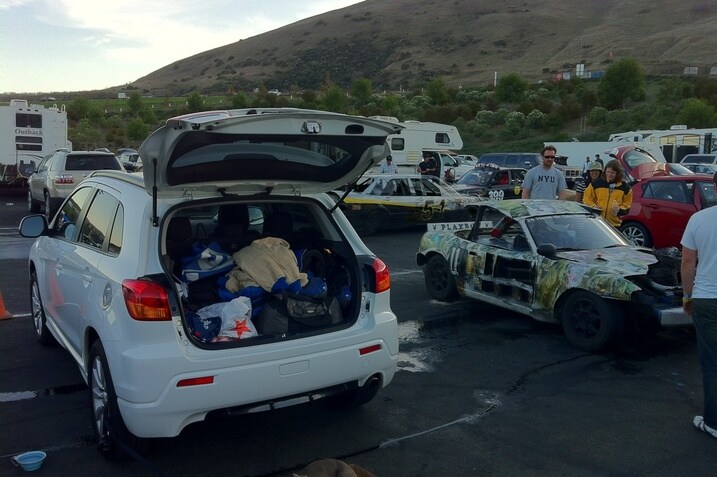
Our longterm 2011 Mitsubishi Outlander Sport SE served as transportation, food service station, storage, clothesline and mobile changing room over this past weekend's 24 Hours of LeMons race at Infineon Raceway.
Though not at it's best as a mile eater — too much road noise, tepid acceleration, sometimes choppy ride — its alert steering and comfy seats are welcome in this class of vehicle.
One minor bummer — where's the flip-down tailgate? I really liked that feature in the non-Sport Outlander. Good for loading, good for sitting. Ah well.

Scene: Service department at Long Beach Mitsubishi
A customer walks in carrying an owner's manual and computer printout for the 2011 Mitsubishi Outlander Sport.
Customer: I'd like an oil and filter change and a tire rotation. And please do these inspections (points to the service manual).
Service advisor: Let me get the VIN and mileage from your car. (He exits, then reappears moments later) I see that you are close to 16,000 miles so we recommend this intermediate service which is $195. (He hands a sheet listing all the services and prices.)
Customer: No thanks. I'll just take the oil change and tire rotation and inspections.
Service advisor: Okay. That will be $69.95
Now for the quiz. Is this vehicle being properly maintained? Or would the more expensive service be a lot better for the Outlander?
According to the paperwork, the service department agreed to "Perform lube, oil and filter change and perform 27 point inspection, top off fluids and set tire pressure." Also, they rotated the tires. Sounds pretty good.
Now, let's look at the "intermediate" service that was offered, and compare it to the agreed-on service. Hey, wait a second… There is very little difference! All that is on the higher priced service is an air filter replacement and "battery service & install terminal protectors," neither of which are called for in the owner's manual. And that costs $125.05 more.
I also reviewed the offer of a "major" service for $392.95 which is recommended every 30,000 miles or 24 months. This adds the cleaning and adjusting of brakes (not sure what needs adjusting on the brakes…) "lube calipers" (sounds important!) fuel injector service, (not called for in the manual) replacement of spark plugs (ditto) drain and refill cooling system (ditto again) and "visually" inspecting the wheel alignment. I'm not sure how accurate this visual inspection will be. Maybe the mechanic crouches in front of the car, looks at the tires and says, "Yup, looks good to me."
I want to quickly point out that the service advisor was very friendly and didn't try the hard sell or guilt tripping once I declined the additional service. And many dealerships do this present this "dealer recommended" service, not just Mitsubishi.
On the same sheet that lists these minor, intermediate and major services, is an "a la carte service menu." Here, you can get an oil and filter change for $29.95 and many other services at pretty reasonable prices. We recommend ordering from the a la carte menu and getting exactly what you need. Then, you'll have enough money left over for dessert.

Bruce Canepa was a guy I used to read about in car magazines. Bigger than life. I was kid in New Jersey. He was a big time Porsche racer.
Thirty something years later I know Bruce personally. We've hung out at the Goodwood Festival of Speed and we have more mutual friends and aquaintances than I can count. Is he a friend of mine? Not even close. But we're not strangers either.
The last time I spoke to Bruce I admitted that I had never been to his store Canepa Design in Scotts Valley, CA, which is near San Jose. Instead I just drool over his inventory online and in his car mag ads. He, of course, said to come up and check it out. That he would personally give me the VIP tour.

I instead took the low key approach. A couple of Saturday mornings ago during the Porsche Rennsport Reunion at Mazda Raceway Laguna Seca I noticed a several hour break in the action, so I suggested to my dad that we drive the 50 miles north to Scotts Valley to check out Canepa's place.
"But Bruce is here at the track racing," my dad said. "He won't even be there." "So what," I said. "That way I don't have to bother him. Plus, if we hussle, we'll be back before the good stuff hits the track this afternoon."
With no more discussion we fired up our long-term Mitsubishi Outlander Sport and we went.
It turned out to be the highlight of our entire weekend. The place is like heaven and the young women at the front desk could not be nicer. We toured Bruce's showroom (pictured above), which is filled with cars for sale in what can only be described as a museum setting. Hell, my living room isn't that nice. And the cars are fantastic. He has anything you could want, from hot rods, to new exotics, to original Shelby Cobras, to classic Corvettes, to sports cars and trucks. All detailed to perfection. Basically, it was one of the best car shows I have ever been too.
Then we went upstairs and toured his personal collection, which includes classic stock cars, sprint cars, hill climb motorcycles and, of course, Porsches. Again, each one is a perfect example, but remember, Bruce is a racer so they do get used. In fact, all of his Porsches were at the track racing that weekend, including his Gulf 917.
And then when we thought we had seen it all, we checked out the state-of-the-art shop, which handles everything from full restorations to vintage racecar prep. It's spectacular. Surgically clean and filled with some of the world's greatest cars getting repaired or updated, including a real GT40 and several Mercedes 300SL Gullwings.
Canepa is also the go-to place to get your Porsche 959 US legal, so there were more than a few examples of the iconic supercar hanging around. We even did an article about that part of Bruce's business back in April of last year.
So, if you're ever up in the central/northern California region, make the drive to Scotts Valley. You'll like what you find.

Last week's 1000-mile round trip to Infineon Raceway in our longterm 2011 Mitsubishi Outlander Sport was sort of a reprise. I'd driven a similar route in the same Outlander during the summer months, so I was curious to compare the fuel economy of both 1000-mile trips.
August roadtrip: 23.2 mpg
October roadtrip: 21.7 mpg
One caveat that makes this not quite an apples to apples comparison — my cruising speed was very roughly 3-5 mph higher during the October trip, and that appears to have more than offset any fuel economy benefit the notably cooler ambient temperature provided. You gotta pay to play...

I recently received an e-mail from Mitsubishi trumpeting the fact that overall calendar year to date (meaning January through October in this case) sales for the brand are up 51 percent over last year. It also stated that the Outlander Sport had "another strong showing" with 1,286 units sold for October.
Not sure what Mitsu's definition of strong is, but for October Kia sold 3,519 Sportages and Hyundai sold 3,777 Tucsons. Given their size, price points and sporty chassis tuning, those Korean cousins are the Outlander Sport's most direct competitors. Maybe if Mitsubishi gave the Sport a less lackadaisical powertrain, sales would be even "stronger".
Still, as many of us have said, working the shift paddles puts some spring in its step and it's a good city runabout given its small footprint and handy rearview camera. In unrelated news, I dig the front end styling and think it's especially sharp in this dark red shade.

Since there are fewer moving parts inside a constantly variable transmission than a manual transmission (or so I’ve heard), I once asked an engineer to explain the CVT to me so I’d know how it worked. He said it was dumb of me to think I could even begin to figure out the CVT, especially since I was so terrible at figuring out almost everything else about cars already.
First of all, he said, the whole idea of the thing goes against the laws of physics, since the key component is a chain (or belt) that you push instead of pull. If you start out by trying to push a length of string across a table instead of pulling it, he said, then the CVT must be living in an alternate universe.
Plus, he added, a Dutchman invented it.

So my education in the mysteries of the CVT didn’t progress very far. But I have been driving cars with CVTs for a long time, and maybe that’s worth a little something. They have been mostly Subarus, since the Japanese company popularized (if that’s the right word) the CVT concept in the U.S. with the Justy and also brought in some wacky 600cc right-hand-drive hot rods with CVTs from the Japanese home market for journalists to drive (the Rex!). A financial connection with Subaru also brought the CVT to Nissan.
Now of course you stumble across CVTs at lots of different companies and here it is in the Mitsubishi Outlander Sport, just like it is in lots of things with 2.0-liter engines. (Apparently the more horsepower you have, the harder it gets to push the string across the table.) My only useful impression of this trend is that every CVT application seems to turn out different.
Here in the Outlander Sport, I’ve grown to appreciate the CVT’s performance in low-speed traffic. Aside from the usual drone as the transmission and engine try to get together on a mechanical speed that will balance optimum efficiency with optimum forward progress, I appreciate the stepless ratio effect as speed builds, especially compared to the clumsy ratio cycling that you get from some six-speed automatics (this means you, Audi/Volkswagen and BMW).
The trouble is, the CVT effect becomes less satisfying the faster you go in the Outlander Sport, as the optimum engine rpm always seems a little past the engine’s torque peak, which is the rpm almost every driver naturally selects while cruising through traffic. As a result, the Outlander Sport always feels like it’s driving through very deep and slippery mud when you get aggressive with the accelerator between 40 mph and 60 mph. No matter how fast you might be accelerating, the powertrain gives you no confidence.
I don’t know why this is. Maybe the Outlander Sport weighs too much. Maybe there is not enough power from the engine. Maybe it is the electronic controls. Maybe it’s just the noise that is the problem, not the performance. All I really know is that the drivability of CVTs in some other small sedans and utility vehicles from other manufacturers (notably Nissan) is more satisfying.
For now, I continue to think the Mitsubishi Outlander Sport is spectacularly good as an around-town utility vehicle, far more successful than any of us suspected when it arrived in our fleet. It’s also a nice vehicle when you’re cruising to your destination, even one hundreds of miles away. But those moments when you have to lay into the gas pedal aren’t very much fun and keep you from embracing this vehicle’s overall goodness.
Wish that Dutchman were still around so he could explain it all to me.

We wish.
I like the looks, size and nimble nature of the Outlander Sport. And the heated seats and navi also get it brownie points. But that laggardly powertrain! Unless you work the paddles and keep it on the boil (and hurt the fuel mileage), you best plan your merging and passing maneuvers well in advance. Ok, enough caning an expired equine.
Mitsubishi is bringing out its all electric "i" for 2012. Toyota's bringing back an all-electric version of the RAV4 next year. Think about how much better Mitsu's truly compact SUV would be with either an all-electric or hybrid powertrain. Zippy performance and much lower "fuel" costs. Works for me. There was some buzz back in July about Mitsu bringing out a plug-in hybrid version of its truly compact SUV in 2013, but we haven't heard anything since.

This week I took the Outlander from L.A. to Monterey, CA. It's about 330 miles each way and involves driving along very scenic CA 1, aka the Pacific Coast Highway. This is one of those trips where the drive itself can be half the fun. Life being a journey and all that...
On a long trip like this, where you have open road and the ability to cruise at 60 or so for long stretches, the Mitsu was fine. Even without adjustable lumbar support for my finicky lower back, the front seats were very comfortable for hours at a time. My iPod was easy to run through the car's stereo, the Nav system helped us find some good eats and the cabin was quiet enough at high cruising speeds except when more serious inclines were tackled, where the engine's drone would require bumping the volume on the stereo.
Yes, I had to take (shifting) matters into my own hands while tackling the mountainous portions so as to keep the Outlander Sport up on its toes rather than flat on its feet. But even with the lack of power, it was still somewhat entertaining to drive as the little Mitsu is pretty good at cutting through curvy blacktop, thanks to its fairly quick steering and buttoned down composure. Too bad Mitsu didn't offer a Ralliart version of this rig...
We're heading back to L.A. shortly and will post another update after we get back with average fuel mileage and trip highlights.
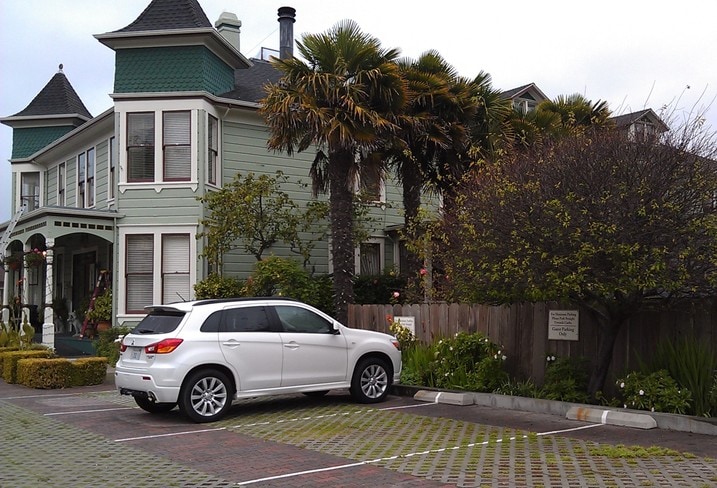
Having wrapped up our L.A. to Monterey road trip, we have just a few more notes on the Mitsu and the trip itself.
— On the sparsely populated, unlit mountain roads the standard xenon headlights were much appreciated as they cast a powerful, wide swath of light with a well-defined cut-off.
— We averaged a respectable 24.8 mpg over 818 miles of mostly highway driving.
— The nav system needs to mute the stereo more when it gives voice prompts. Sometimes it was as if Lady Monotone was trying to rap along with the music. And yes, we had the prompts volume set high enough.
— Another high-tech bugaboo is that when you're using the Bluetooth phone hook-up, there's a low but still annoying fax machine-like noise that accompanies the call.
— As I've said before, the Outlander Sport's a snap to park with its pug nose styling, clipped tail and rearview camera.
— Trip highlights included the charming Centrella Inn bed and breakfast (shown above) in Pacific Grove as well as the incredible Monterey Bay Aquarium, (the sea otters are a riot).
Wrap-Up
We have a little history of long-term Mitsubishi Outlanders. First we scrutinized the 2007 Mitsubishi Outlander XLS. Just last year we wrapped up our 12-month critique of the 2010 Mitsubishi Outlander GT. And now, we've just finished a year living with this 2011 Outlander Sport SE.
Smaller and more affordable than the Outlander, the Outlander Sport was an all-new model for Mitsubishi a year ago. Ours arrived with just 30 miles on its 2.0-liter inline four-cylinder engine. Rated at 148 horsepower and 145 pound-feet of torque, it was by no means quick, but neither were most of its competitors, which include the Jeep Compass and Patriot and the Kia Sportage.
Our decision to order the electronically variable all-wheel-drive system (AWC to Mitsubishians) dictated a continuously variable transmission (CVT). It was a decision we would later question.
All SE trim Outlander Sports begin with an MSRP of $23,775. Extra options raised our final sticker price to $28,810. Among the more notable, and costly, upgrades were a navigation system, rearview camera, panoramic glass roof and Rockford Fosgate radio upgrade. The exterior styling cues that first attracted us to the Sport, including the tailgate spoiler and front corner extensions, were also options.
A Slow Start
Early impressions of the 2011 Mitsubishi Outlander Sport engine were unanimous. "It lacks intestinal fortitude," was a favorite. "Slower than dial-up," was a close second. "It's a shame, too, as it looks like it might be a shade sporty on the outside," wrote Senior Editor Ed Hellwig. "Even says so right there in the name."
This has been the empty promise of most compact SUVs in recent memory. Small stature and sporty styling makes them appear nimble and fun. Then you realize the car is packing four cylinders with a CVT. Can't have it all.
Acceptance of the velocity challenges inherent in the Outlander was one thing; noise was another. Executive Editor Michael Jordan explained, "For me, it's not the speed that really matters here; instead it's the sound. If the engine sounds willing, then the time passes happily. Unfortunately this engine does not sound happy. It is quiet when it's idling and fairly composed when it's working hard, but everything in between is far from musical. This is what happens when you have a wide range of lightweight materials all vibrating at different frequencies. Like so many small-displacement engines, this one needs tuning. But it's tuning for noise, vibration and harshness, not power." Tire noise from the 18-inch Goodyears was similarly invasive. Not even increasing the radio volume could neutralize these audible annoyances, though it did help.
Road Trip Worthy, Sort of
With its tire and road noise issues subdued, the 2011 Mitsubishi Outlander Sport offered numerous amenities for the road warrior. We feared the short wheelbase and firmer suspension tuning would make a tooth chipper of the Outlander, but its highway ride was quite comfortable. The electric power steering felt more natural than that of many competitors, which helped steady the SUV on the open road. The AWC all-wheel-drive system worked well in inclement weather, while its adjustability livened things up when playing in soft snow. Further, the athleticism allowed by its adjustable AWC differentiated the Sport from its peers.
Long trips offered the opportunity to get familiar with the interior features of the Sport. We felt the choice to add an auxiliary port rather than full MP3 integration was a misstep by Mitsubishi. Still, our favorite devices worked fine through the auxiliary jack, so it wasn't a deal-breaker. The fact that its 40GB hard drive could store the music we couldn't cram onto our iPods and CDs certainly helped.
We also liked the touchscreen navigation, as it was simple to use and easy to read despite its small size. We also grew to appreciate the Outlander's general cabin ambience. The huge panoramic sunroof and LED border surrounding it was received well by rear passengers and made for a neat atmosphere when driving at night. The general simplicity of the cabin was another plus.
Extra seat time also cemented some things we liked and didn't like about the Outlander. After a 1,000-mile trek in the Outlander, Engineering Editor Jason Kavanagh wrote the following. "The worst of this car is that damned CVT. Just terrible. There's a way to do CVTs right (see Nissan) but this one always leaves the engine struggling. No confidence to accelerate around anything, ever. And the drone of the engine when you wood it (which is a lot, since it's got no sauce) is awful. It's the CVT that wrecks it for the Outlander as a road trip car."
After a 650-mile all-California road trip from Santa Monica to Monterey and back, our Editor in Chief Scott Oldham wrote, "I'm still a fan of this little crossover. It was quiet enough out on the highway, its seats were comfortable, its sat-nav, sat radio and air-conditioning kept my dad and I happy, and it had plenty of range. I also like the way it handles and it's very easy to park. The only disappointment was the Mitsu's fuel economy."
Fact is, the Mitsu's fuel economy was disappointing the entire year. After 20,000 miles our single best tank was just 27 mpg, and we averaged 23 mpg for the duration of our test. That's well behind the Outlander's 24 city/29 highway mpg EPA ratings.
Routine Maintenance
Mechanical durability was one area where the Outlander performed well. Long Beach Mitsubishi handled all of our maintenance needs and they were professional, efficient and did not try (hard) to upsell us on unnecessary items.
After 20,000 miles in just 12 months, we visited the dealer just twice for regular service — at 7,500 and again at 15,000 miles. The average cost per visit was $80 for synthetic oil changes and tire rotations. And we avoided the air-conditioning issues prevalent in our Outlander GT. We really can't say a bad thing about our overall maintenance experience with the Outlander Sport.
Nothing Lasts Forever
After 12 months and 20,000 miles with the 2011 Mitsubishi Outlander Sport, it was time to give it back. When we looked back on our time, we noticed a theme had developed: one of compromise.
With the Sport there was always give and take. A comfortable ride, decent handling and unique atmosphere complemented its highway character, but those things weren't always enough. At highway speeds, tire and engine noise were excessive and the CVT didn't make many friends either. So our Sport favored the role of errand runner, taking advantage of city-friendly dimensions and a useful back-up camera.
Dealer interaction was another example of an Outlander Sport trade-off. Service center interactions were positive overall. There were no warranty or recall items during our test, and Long Beach Mitsubishi handled our routine maintenance visits promptly and professionally.
Where it shined mechanically, the Sport whimpered in the resale value department. At test end the Mitsubishi depreciated 38 percent from its original MSRP according to Edmunds' TMV® Calculator . This calculation is based on a private-party sale. Our long-term Outlander GT depreciated 19 percent under similar conditions.
| Total Body Repair Costs: | None |
| Total Routine Maintenance Costs: | $163.08 (over 12 months) |
| Additional Maintenance Costs: | None |
| Warranty Repairs: | None |
| Non-Warranty Repairs: | None |
| Scheduled Dealer Visits: | 2 |
| Unscheduled Dealer Visits: | None |
| Days Out of Service: | None |
| Breakdowns Stranding Driver: | None |
| Best Fuel Economy: | 27.5 mpg |
| Worst Fuel Economy: | 18.4 mpg |
| Average Fuel Economy: | 23.0 mpg |
| True Market Value at service end: | $17,978 (private-party sale) |
| Depreciation: | $10,832 (or 38% of original MSRP) |
| Final Odometer Reading: | 19,794 miles |
The manufacturer provided Edmunds this vehicle for the purposes of evaluation.
